Why Study in Malaysia | A Complete Guide for Study in Malaysia
Study in Malaysia is a healthy choice. It will provide you with the experience of multicultural, colorful, independent and developed life style. Malaysia has a number of world class colleges and universities which are at the top of world’s university list. Malaysia is more desirable because of its reputable degrees, low tuition fees, and excellent educational system. Malaysia also offers scholarships in almost all fields.
According to an official release Malaysia had an overall ranking as world’s 10th most competitive country. It has advance and independent economy. World Bank has reported Malaysia as world’s 24th most business friendly country.
From last so many years Malaysia is offering numerous opportunities to international students for making their careers. In 2010 more than 80,000 students applied in Malaysia. Another major aspect of choosing Malaysia is its weather which stays pleasant and lovely throughout the year. If we see the political aspects, Malaysia is strongly stable and crime free country.
Study in Malaysia for Pakistani Students is a best place to achieve their future goals. Most famous universities of Australia and UK have their campuses in Malaysia. Students have advantages of this that they get dual degrees of both countries. Guide of study in Malaysia is will entertain students regarding admission to arrival.
Study in Malaysia is a healthy choice. It will provide you with the experience of multicultural, colorful, independent and developed life style. Malaysia has a number of world class colleges and universities which are at the top of world’s university list. Malaysia is more desirable because of its reputable degrees, low tuition fees, and excellent educational system. Malaysia also offers scholarships in almost all fields.
Important Questions about Study in Malaysia: A Guide for Pakistani Students
How much the Average tuition fee for undergraduate or post graduate courses in Malaysia?
We share average tuition fee for undergraduate or post graduate courses in Malaysia. International students can easily get idea how much fee they require and how can they manage their expenses to study in Malaysia. Students who want to study undergraduate level in Malaysia can serve about US$ 4000 to 5000 for 3 or years. Students can also find this information from the university, where they apply for admission.
Candidates who want to study post-graduate level degree program can consume around US$10,000 to 15,000 to complete that course. We advised to international students, there are 700+ universities in Malaysia so, they must have complete knowledge about universities in Malaysia and the courses fee for international applicants. After complete information then applicants can apply for multiple universities where they think, they can manage their tuition fee and can get recognized degree.
Will it be allowed to work while I am studying in Malaysia?
Normally, international students don’t have permission to working during their semesters systems. But students can do part work in their holidays or university break for 20 hours per week. There are multiple places in Malaysia, where international applicants can work part time during their off semesters days such as petrol kiosks, markets, restaurants, singer, guest relations officers and cashier etc.
International applicants, who want to do job in Malaysia during their studies, they must have valid ++++student pass. Students who want to get students pass must submit some important documents passport photocopy, contact details and processing fee amount 120 RM.
Those candidates who have plan to work in Malaysia during their study, they must submit the application of part time work to the immigration department Headquarters Malaysia through the representative of their university.
International students must be get the supporting letter to work in Malaysia from the university. The part time work application will approved or disapproved after an interview of international applicants. The university must submit the academic report of students and their progress in studying clearly mention in it. The authorities will decide either students work extension will be increase or not. It all depend upon the student’s academic performance.
Where and what kind of accommodation are in Malaysia for international student?
International students who want to study in Malaysia, after getting Admission in University the next step for every students has to find out the suitable accommodation for them. Before arrival to Malaysia, international students must arrange their accommodation.
International student don’t think the university or college will give them accommodation after get admission in university. Student must have their done their own arrangement of accommodation before leaving from their home country.
Malaysia government or university authorities will also help you to find out your accommodation, but you have to inform them about your concern, budget and other information they require for accommodation.
International students can also contact with accommodation office at their universities and get complete information. On campus accommodation in Malaysia is based shared or private bedroom and cost of these kinds of accommodation start from RM 350 to 650 on monthly basis.
Off campus accommodation in Malaysia is based on the houses which are near to colleges and universities. Off campus living include single or double story houses, apartments and condominiums. International students can get accommodation according to their living style and their budget. Normally, students can pay all their bills and rent as well which is based on RM 150 to 900 on monthly basis.
How can I find out, my educational background will be accepted by the Malaysia University?
International students who want to study in Malaysia can apply directly to any public or private universities to get Admission. That university will guide students either their degree accepted by the university or not. Those candidates who want to get their kind of information, must contact with the university’s authorities for guidance.
What’s the usual application process for Masters level courses in Malaysia?
International students can apply to any Malaysian university through online system or via get and completing an application form from any Malaysian institution. Students can get information directly from any Malaysian and submit their documents for admission. Applicants can apply to multiple Malaysian universities.
International students will find out from the institution what documents require to apply for Malaysian university. Students who applying for private universities must find out that, university is recognized from the government of Malaysia or not. Don’t waste your money and time on UN-authorize University
Usual application process for Masters level courses in Malaysia is vary institute to institute. We give you the basic guide line and submit some important documents to apply for Malaysian university: Completed application form, copies of all educational documents, IELTS and TOEFL, copy of passport, resume, English translations of all documents submitted, medical report and students’ visa processing fee.
International students also require the students pass before coming to Malaysia. You need to apply for students pass, there are some important document submit to get this student pass such as university acceptance letter, application form for student pass, copy of passport, medical report, bank statement.
What are the language requirements for international students to study in Malaysia?
Mostly, English language is taught in Malaysian universities for all postgraduate level courses. So, international students don’t worry about language problem. Students who belong to non-native English speaker countries must have certificate of IELTS or TOEFL which are the big proof of their English language proficiency skills.
International students must have complete knowledge about the language requirements to study in Malaysian university. Before apply for the admission in any university, get the complete admission and language details of multiple universities in Malaysia.
How much money will I need during my Masters level studies in Malaysia?
Those candidates who are going to do Masters level studies in Malaysia will have to set their budget first through this information given below. This information is very helpful for you to decide, which course, accommodation and area suitable for you to live in Malaysia during their studies.
International students who manage their study and living budget, they must have complete knowledge about how much cost consume on their studies, living, food and other that kinds of stuff. Students must bear in mind that, life in Kuala Lumpur is much costly in Malaysia as compare to other areas. Accommodation costs in Malaysia depending open your living standards.
Two types of accommodation:
One is University accommodation which include halls of residence, which are normally on campus and other one is include private accommodation -- house and flat rental apartments. Living cost in Malaysia is based on $2,632 annually, but this cost has increased, when choose to live in cities.
Study cost is based on the courses you choose and private or government universities. The study expense is depending upon these two things. The average tuition fee to study post graduate level program in Malaysia is based on US$10,000 to 15,000 for whole program, the cost of higher when you choose private university or medical course.
Where do I apply for my student visa?
Generally, students must have students pass to enter in Malaysia, they can apply to higher education learning to get their students pass. After that, apply for any Malaysian university and submit this pass to that university where you get admission.
The university will submit this pass to immigration department Malaysia, this process will take 21 working days for approval. When candidate reached in Malaysia, than passport and student visa will be stamped
Students who want to apply in Malaysian university, follow these steps to get admission and make you dream come true to study in Malaysia. Firstly, students must find out, what is the deadline of submission of application of Malaysian university.
Secondly, applicants must have knowledge about institution and download the admission application form from their official website. Students must complete that application form and write everything accurately, because any kinds of mistake will reject your application of admission. So, carefully complete your whole application form and attached all required documents clearly.
Thirdly, students must apply for student pass before reach to Malaysia, and the university will apply for student pass on behalf of candidates to the directorate of pass and immigration headquarters. After one month duration, the immigration department will notify the institution of student pass approval. This whole process required a lot of time so students must apply 6 months before.
Student Visa Prerequisite:
After get acceptance letter form the Malaysian university students can apply for student visa as soon as possible. Students only need student pass to arrive in Malaysia. There are some important documents require to apply for student visa for Malaysia such as passport copy, visa application form, photograph passport size with blue background, CNIC copy, approval letter from the department of immigration from Malaysia, university letter, and visa fee payment.
Student Visa Pass Method:
International student must submit the application form with all related official papers to the university which has the authorization of immigration foreign affairs to recruit the Malaysian students. The institution head will accepted your application that will help to get the students application form from the Malaysia immigration department.
Letter of approval will be issue to student and student pass will be released by the immigration department. All kinds of visas application will submitted to higher commission of Malaysia.
Visa Rate and Its time:
The visa processing time takes one week and the cost of visa is £10. The duration of this visa is based on student’s study period. If visa expire before their studies, so students will have to apply again for student visa before expire date of your previous visa.
Why international Students Choose Malaysia
If this is your first time getting to know about Malaysia, this section will tell you more about its people, cultures, food, climate, economy, places of interest, and more. You will also read about Malaysia’s many achievements and how the country is continuing to gain international prominence.
Next, you can begin to explore the higher education option in Malaysia and get a better understanding of how the quality of higher education courses are assured by the Malaysian Qualifications Agency. And best of all, you’ll find out how affordable higher education in this country can be.
The section ends with an info graphic on why you should choose Malaysia as your destination of choice when studying abroad. Start exploring your higher education options here – you're bound to find one that meets your needs!
Cost of Studying and Living in Malaysia

One of many reasons why international students choose Malaysia is because of its cost-effective, high quality tertiary education. As an example, you can acquire a UK engineering degree (3 years) in Malaysia through a 3+0 foreign university franchised degree programme at an estimated RM68,000 (US$17,000), whereas the tuition fee of the same 3-year degree programme at the host university in the UK is about £36,000 (or RM217,000 or US$54,250). As such, a student can save up to RM149,000 (US$37,250) in tuition fees if he or she chooses to study in Malaysia (see Table 2.24). If cost of living is taken into account, students who complete their entire 3+0 degree in Malaysia can save up to an estimated RM216,000 (US$54,000).
In a recent survey on the 'Most Affordable Cities for Students in 2016' QS University Ranking found that “Kuala Lumpur receives a near-perfect score for affordability, with a winning combination of low living costs and relatively low tuition fees”.
The major components of education cost are:
- Course fees which include tuition fees and other study fees payable to the institution, depending on what you are studying and the duration of your course/study programme; and
- Living expenses which will depend on where you are staying, your type of accommodation and your lifestyle.
Education Costs in Malaysia
 Your course fees will consist of your tuition fees plus other related study expenses. Below are types of fees that you may incur during your course of study :
Your course fees will consist of your tuition fees plus other related study expenses. Below are types of fees that you may incur during your course of study :
1. Academic Fees:
- Registration fee
- Tuition fee
- Deposit
- Computer/Science laboratory fee
- Health & hospitalization insurance premium
- Library fee
- Other incidental costs such as examination fees
2. Non-academic Fees:
- Student visa fees
- Medical check-up
- Health and hospitalisation insurance premium
The breakdown of estimated tuition fees at various levels of study at private higher educational institutions (PHEIs) in Malaysia are outlined below :
A. Pre-University Programmes
If you have completed IGSCE or O-level and are looking for pre-university studies to prepare for a bachelor’s degree programme or professional courses, Malaysia offers a wide variety of pre-university programmes. Here are some types of pre-university programmes, the duration of study and estimated tuition fee.
Cost of Living in Malaysia
Breakdown of living cost in Malaysia
The average international student should be prepared to spend about RM1,800 (US$450) per month for living expenses in the vinicity of a city. The cost can be broken down as:
- AccommodationYou should estimate about RM300 (US$75) to RM600 (US$150) for your accommodation per month. The rental will vary depending on the geographical area, the type of accommodation (on-campus living in a hall of residence; or off- campus living in an apartment, condominium, single-storey house, double-storey house, etc.), the facilities provided in the house (e.g. with or without air-conditioning) and of course, the number of people sharing the room (or the apartment or house).
- Food / HousekeepingYour food and housekeeping expenses are estimated to be around RM600-900 (US$150- 225). This is based on about RM20-30 (US$5- 7.50) for three meals per day. Naturally, if you cook and share the cooking expenses with your friends, it would be cheaper.It’s possible to have a fast food meal for below RM10 (US$2.50) in Malaysia. For example, a McValue meal at McDonald’s starts at RM5.95. Meal sets at KFC start at RM6.90 and pizza deals for group meals from Domino’s are also below RM10 per pax.Local food like rice and noodles at food stalls or coffee shops range from RM4-10 (US$1-2.50). At mid-range restaurants, you can expect to pay RM20-40 for a meal (US$5-10). A coffee from Starbucks costs an average of RM12-16 (US$3-4).
- Clothing and laundryYour clothing expenses like washing, ironing, dry-cleaning, etc. may cost around RM60 (US$15) per month.
- Public TransportStudents who stay on campus or near campus may not incur any cost of travelling to and from classes. However, other travelling may cost approximately RM80-150 (US$20-37.5) per month.
- Telecommunication / Mobile Phone Bills and UtilitiesThe mobile phone packages in Malaysia are very competitive. How much you spend will depend on your usage and the promotional package you choose. The average student may spend about RM30-50 (US$7.50-12.50) per month.
- Books, Reading Materials and Stationery
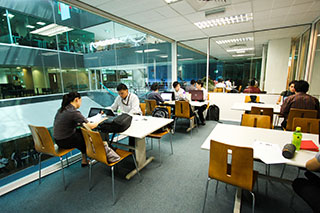 The estimated cost of books and stationery should be around RM50-100 (US$12.50-25) per month, but it would largely depend on the course you have signed up for and the number and nature of projects in your course.
The estimated cost of books and stationery should be around RM50-100 (US$12.50-25) per month, but it would largely depend on the course you have signed up for and the number and nature of projects in your course. - Medical / Hospitalisation InsuranceIf you put aside RM50 (US$12.50) per month for medical expenses, it would be suf cient (include you in case you need outpatient treatment at a private clinic) during the year. This estimate is the amount you will have to pay for your medical and hospitalisation insurance of about RM500 (US$125) per year.
- Personal ExpensesYour monthly personal expenses largely depend on your personal lifestyle. However, the cost can be estimated to be between RM100 (US$25) and RM200 (US$50). This includes your socialising needs, toiletries, haircut, clothes, movie, etc
Using the estimate above, the total cost of living for a student will average at RM1,800 (US$450) per month or RM21,600 (US$5,400) per year. It is important to remember that the above estimate is only a guide in planning your budget to study in Malaysia and geographical location and personal lifestyle should be factored in when planning your personal budget.
Where can I study in Malaysia?
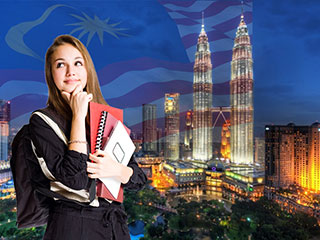 Now that you’re considering Malaysia a country to study abroad, next you need to find out what options you have and which courses or university would suit you best.
This topic provides you with a better understanding of the higher education structure in Malaysia and types of tertiary institutions. So you’ll be more confident when making a study decision. Having a better understanding of the higher education structure in Malaysia means you know what all your possible options are right in Malaysia. This could be particularly useful especially if for some reason, your initial study plans cannot be carried out
Now that you’re considering Malaysia a country to study abroad, next you need to find out what options you have and which courses or university would suit you best.
This topic provides you with a better understanding of the higher education structure in Malaysia and types of tertiary institutions. So you’ll be more confident when making a study decision. Having a better understanding of the higher education structure in Malaysia means you know what all your possible options are right in Malaysia. This could be particularly useful especially if for some reason, your initial study plans cannot be carried out

The higher education system in Malaysia
Besides an overview of the higher education system in Malaysia, you will be introduced to the types of higher educational institutions in Malaysia and what you need to know before applying to a college or university.
Let’s begin by getting to know the education governing authorities in this country.
Education Governing Authorities
The Malaysian education structure can be divided into pre-tertiary and tertiary education levels. The former is governed by the Ministry of Education (MOE) (or Kementerian Pendidikan Malaysia in Malay) while the latter comes under the Ministry of Higher Education (MOHE).
Previously, education came under only one ministry, namely, MOE. In 2004, MOHE was created to manage the higher education sector which was fast expanding. Subsequently, both ministries were merged in 2013 to facilitate the smooth implementation of the Malaysia Education Blueprint 2013-2025. On 28 July 2015, the government once again reestablished MOHE.
Organisational Structure of the Ministry of Higher Education
The following departments and sectors come under MOHE:
- The Department of Higher Education
- Public Higher Education Management Sector
- Private Higher Education Management Sector
- The Department of Polytechnic Education
- The Department of Community College Education
- The Higher Education Management Sector
- The Higher Education Development Sector
- Malaysian Qualifications Agency
- National Higher Education Fund Corporation (PTPTN)
- National Professor Council
- Higher Education Leadership Academy
- Tunku Abdul Rahman Foundation
- All public universities in Malaysia
- Public Higher Education Management Sector
- Private Higher Education Management Sector
Education Legislation
The legal regulatory framework that governs the provision of education in Malaysia aiming at ensuring quality education to all, well-managed institutions, include:
- The Education Act 1996
- The Private Higher Education Institutions Act 1996 (Act 555)
- The National Council on Higher Education Institution Act 1996
- The Malaysian Qualifications Agency Act 2007 (replacing the previous Act namely, the National Accreditation Act Board 1996 which has been repealed)
- The Universities and University Colleges (Amendment) Act 2009 (Act A 1342)
- The National Higher Education Fund Corporation Act 1997
- Universiti Teknologi MARA Act 1976 (Act 173)
- The National Higher Education Fund Corporation 1997 (Act 566)
- The Private Higher Educational Institutions (Amendment) Act 2009 (Act A1352)
The Education Act 1996 covers pre-tertiary levels of education under the national education system which comprises preschool, primary, and secondary education as well as post-secondary education. The other eight acts regulate the provision of higher education in Malaysia.
Why is education legislation important?
Legislation in education is important to you as it helps protect your rights as a student. It provides a framework to regulate how HEIs are run. It also assures the quality of education and qualifications you receive (and pay for). Essentially, it protects the rights of students like you.
Legislation in education is important to you as it helps protect your rights as a student. It provides a framework to regulate how HEIs are run. It also assures the quality of education and qualifications you receive (and pay for). Essentially, it protects the rights of students like you.
Academic Qualifications
Malaysia has a well-defined internationally recognised qualification framework. The qualifications awarded by all approved HEIs in Malaysia are governed by the Malaysian Qualifications Framework (MQF). The Malaysian Qualifications Act 2007 provides for the establishment of the Malaysian Qualifications Agency (MQA) whose main role is to implement MQF. MQA is an internationally recognised qualification assurance body, and a member of the ASEAN Quality Assurance Network (AQAN) and other networks; while MQF benchmarks against the standards of the UK, Australia, New Zealand and Europe (Bologna process and EQF).
MQF specifies the minimum number of credits required for each level of programme. That means that students needs to achieve the following minimum number of credits (indicated in brackets) before an academic qualification can be awarded to them by the higher educational institution at which they are studying, e.g. certificate (60 credits), diploma (90 credits), bachelor degree (120 credits), and taught master degree (40 credits). Master and doctoral degrees obtained by research do not have credit values.
The Malaysia Education Blueprint 2015-2025 (Higher Education)
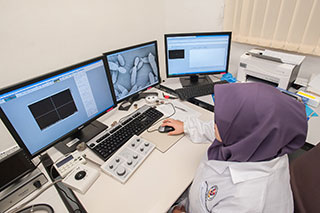 Launched on 7 April 2015, the Ministry of Education developed the Malaysia Education Blueprint 2015-2025 (Higher Education) or the MEB (HE) with the aim of evolving in order to stay abreast of global trends in education. Through its system aspirations and 10 shifts, the outcomes of the Blueprint will benefit all higher education students in Malaysia, both local and international.
Launched on 7 April 2015, the Ministry of Education developed the Malaysia Education Blueprint 2015-2025 (Higher Education) or the MEB (HE) with the aim of evolving in order to stay abreast of global trends in education. Through its system aspirations and 10 shifts, the outcomes of the Blueprint will benefit all higher education students in Malaysia, both local and international.
 Launched on 7 April 2015, the Ministry of Education developed the Malaysia Education Blueprint 2015-2025 (Higher Education) or the MEB (HE) with the aim of evolving in order to stay abreast of global trends in education. Through its system aspirations and 10 shifts, the outcomes of the Blueprint will benefit all higher education students in Malaysia, both local and international.
Launched on 7 April 2015, the Ministry of Education developed the Malaysia Education Blueprint 2015-2025 (Higher Education) or the MEB (HE) with the aim of evolving in order to stay abreast of global trends in education. Through its system aspirations and 10 shifts, the outcomes of the Blueprint will benefit all higher education students in Malaysia, both local and international.System Aspirations for Higher Education
The MEB (HE) covers five system aspirations for higher education, that is, to improve:
-
Access – to increase access to and enrolment in higher education mainly through growth in technical and vocational education and training (TVET), private higher learning institutions (HLIs) and online learning;
-
Quality – to improve the quality of graduates by increasing the current 75% graduate employability rate to more than 80% in 2025, to improve the quality of institutions with the aim of placing one university in Asia’s Top 25, two in the Global Top 100, and four in the Global Top 200, and to improve the quality of the overall system by raising its U21 ranking for research output from 36th out of 50 countries to the top 25, and to increase the number of international students in HLIs from 108,000 today to 250,000 students in HLIs and schools by 2025;
-
Equity – to ensure that all Malaysians have the opportunity to fulfill their potential regardless of their background, for example, improving the enrolment rate and completion rate of students from socio-economically disadvantaged backgrounds and communities;
-
Unity – to ensure that enrolment in HLIs reflects the mix of Malaysia’s ethnicities with the aim of creating an education system that provides students with shared values, shared experiences, and common aspirations by embracing diversity; and
-
Efficiency - to maximise the return on investment in higher education and to maintain the current levels of government expenditure per student across public institutions; and to rise from 44th out of the 50 countries in the U21 output ranking that covers research, enrolment, and employability to be in the top 25 by 2025.
Access – to increase access to and enrolment in higher education mainly through growth in technical and vocational education and training (TVET), private higher learning institutions (HLIs) and online learning;
Quality – to improve the quality of graduates by increasing the current 75% graduate employability rate to more than 80% in 2025, to improve the quality of institutions with the aim of placing one university in Asia’s Top 25, two in the Global Top 100, and four in the Global Top 200, and to improve the quality of the overall system by raising its U21 ranking for research output from 36th out of 50 countries to the top 25, and to increase the number of international students in HLIs from 108,000 today to 250,000 students in HLIs and schools by 2025;
Equity – to ensure that all Malaysians have the opportunity to fulfill their potential regardless of their background, for example, improving the enrolment rate and completion rate of students from socio-economically disadvantaged backgrounds and communities;
Unity – to ensure that enrolment in HLIs reflects the mix of Malaysia’s ethnicities with the aim of creating an education system that provides students with shared values, shared experiences, and common aspirations by embracing diversity; and
Efficiency - to maximise the return on investment in higher education and to maintain the current levels of government expenditure per student across public institutions; and to rise from 44th out of the 50 countries in the U21 output ranking that covers research, enrolment, and employability to be in the top 25 by 2025.
10 Shifts
To achieve these aspirations as stated in the above, the MEB (HE) outlines 10 Shifts that will spur continued excellence and transformation in the higher education system.
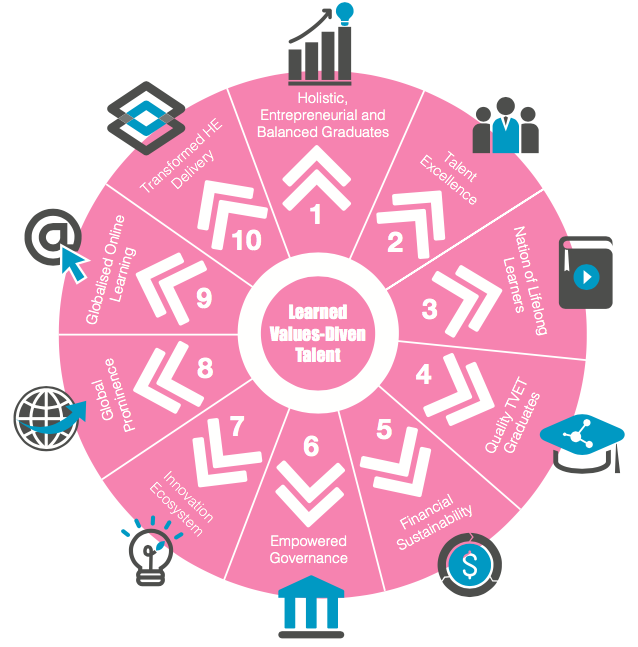
The objectives of each Shift are:

Shift No. 1 - Holistic, Entrepreneurial and Balanced Graduates
To develop holistic, entrepreneurial and balanced graduates in line with the National Education Philosophy who can contribute towards the betterment of the family, society, nation and global community. These qualities are re ected by six primary attributes – ethics, and spirituality, leadership skills, national identity, language pro ciency, thinking skills and knowledge.
Shift No. 2 - Talent Excellence
To develop an academic community that is relevant and respected in both the local and international community by to attracting, developing, and retaining excellent talent both locally and internationally.
Shift No. 3 - Nation of Lifelong Learners
To make learning and relearning an integral part of the Malaysian way of life through a well-coordinated, high quality lifelong learning system; and by establishing learning communities in every organisation.
Shift No. 4 - Quality TVET Graduates
To be a premier higher education TVET provider that develops skilled talent to meet the growing and changing demands of industry, and promotes individual opportunities for career development.
Shift No. 5 - Financial Sustainability
To establish a sustainable nancing system for Malaysia’s higher education that is focused on outcomes and performance that involves:
-
Continued government investment of a large portion of the national budget in the higher education system for a return on investment that is comparable to that of peer industries
-
Diverse sources of funding for public and private HLIs to allow continuous improvement in the quality of their programmes, and more prudent and innovative use of their resources; and
-
More targeted support for socio-economically disadvantaged students to make enrolment more affordable and accessible to everyone who is eligible for higher education
-
Continued government investment of a large portion of the national budget in the higher education system for a return on investment that is comparable to that of peer industries
-
Diverse sources of funding for public and private HLIs to allow continuous improvement in the quality of their programmes, and more prudent and innovative use of their resources; and
-
More targeted support for socio-economically disadvantaged students to make enrolment more affordable and accessible to everyone who is eligible for higher education
Continued government investment of a large portion of the national budget in the higher education system for a return on investment that is comparable to that of peer industries
Diverse sources of funding for public and private HLIs to allow continuous improvement in the quality of their programmes, and more prudent and innovative use of their resources; and
More targeted support for socio-economically disadvantaged students to make enrolment more affordable and accessible to everyone who is eligible for higher education
Continued government investment of a large portion of the national budget in the higher education system for a return on investment that is comparable to that of peer industries
Diverse sources of funding for public and private HLIs to allow continuous improvement in the quality of their programmes, and more prudent and innovative use of their resources; and
More targeted support for socio-economically disadvantaged students to make enrolment more affordable and accessible to everyone who is eligible for higher education
Shift No. 6 - Empowered Governance
To develop a portfolio of fully- autonomous and semi-autonomous HLIs that can operate freely within the regulatory framework established by the government.
Shift No. 7 - Innovation Ecosystems
To facilitate the development of innovation ecosystems in a few national priority areas through new collaboration models across academia, industry, government and community, in order to fuel the nation’s economic growth.
Shift No. 8 - Global prominence
To develop Malaysia as an international education that is valued by students for its competitive advantage in providing value for money higher education and that balances quality and affordability with the added value of rich cultural experiences. A target enrolment of 200,)00 international students by 2020 and 250,000 by 2025 is the aim.
Shift No. 9 - Globalised Online Learning
To be a premier education hub through GOL by increasing the of quality education for Malaysians and the global community.
Shift No. 10 - Transformed HE Delivery
To transform the higher education system beginning with the transformation of the Ministry through transparent delivery, with effectiveness and ef ciency levels comparable to that of the private sector. Subsequently, the Ministry seeks to catalyse transformation among private and public HLIs.
All these transformation efforts will benefit local students and international students as well.
The number of higher educational institutions and student enrolment are: (as at 30 June 2016): 20 public univesities 495 private higher educational institutions 34 polytechnics 94 community colleges 1,253,501 student enrolment (as at 31 Dec 2015) 125,089 international students (undergraduate and postgraduate levels)
| The number of higher educational institutions and student enrolment are: (as at 30 June 2016): |
| 20 public univesities |
| 495 private higher educational institutions |
| 34 polytechnics |
| 94 community colleges |
| 1,253,501 student enrolment (as at 31 Dec 2015) |
| 125,089 international students (undergraduate and postgraduate levels) |
Higher educational institutions in Malaysia
There are two categories of higher education institutions under the jurisdiction of the Ministry of Higher Education (MOHE) Malaysia:
-
Government-funded public universities, polytechnics, community colleges and public colleges
-
Private higher educational institutions (i.e. institutions not funded by the government) which include:
-
non-university status institutions such as private colleges
-
university status institutions such as university colleges
-
foreign university branch campuses e.g. Monash University Malaysia and The University of Nottingham Malaysia Campus
Government-funded public universities, polytechnics, community colleges and public colleges
Private higher educational institutions (i.e. institutions not funded by the government) which include:
- non-university status institutions such as private colleges
- university status institutions such as university colleges
- foreign university branch campuses e.g. Monash University Malaysia and The University of Nottingham Malaysia Campus
Did you know?
Higher education enrolment has increased over the years. Do you know how many students are pursuing higher education in Malaysia in 2016?
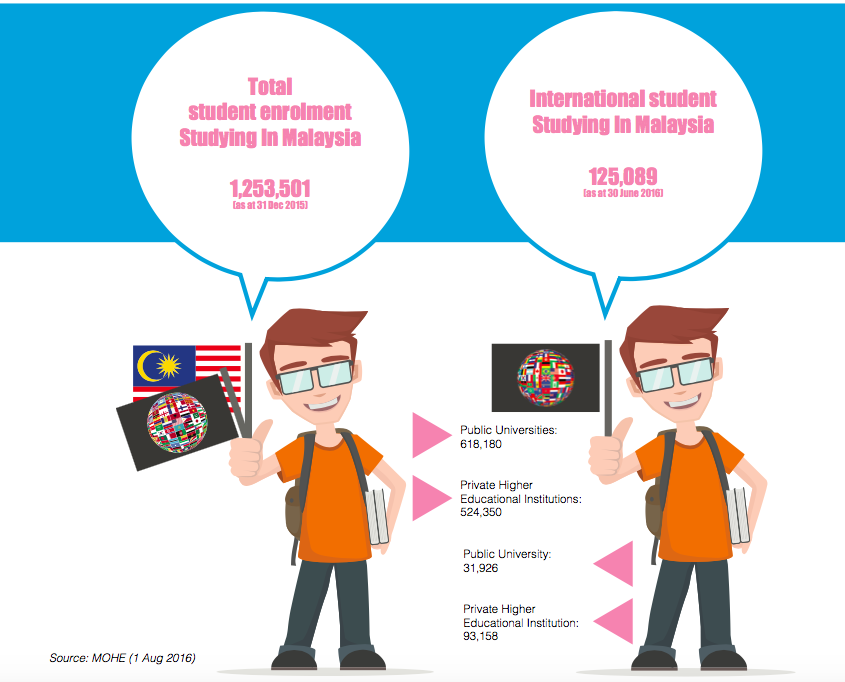
MOHE is directly responsible for the operation and performance of public HEIs, whereas private HEIs are guided by MOHE’s policy guidelines and objectives.
International students coming to study in Malaysia can apply to public universities and private higher educational institutions. Let’s take a closer look at the institutions that fall under these categories:
Higher education enrolment has increased over the years. Do you know how many students are pursuing higher education in Malaysia in 2016?

| Public universities |
|---|
Public universities are fully funded by the government and are governed as self- managed institutions. They offer mainly bachelor degrees and postgraduate programmes, with some offering programmes at diploma level and foundation levels. There are 20 public universities in Malaysia, with at least one in every state. Public universities generally have a larger campus and student enrolment; and offer a wide variety of different elds of study.
These universities can be divided into ve research, 11 comprehensive universities and four universities specialised technical universities (MTUN). The ve public universities that have been designated as research universities are Universiti Malaya (UM), Universiti Putra Malaysia (UPM), Universiti Kebangsaan Malaysia (UKM), Universiti Sains Malaysia (USM) and Universiti Teknologi Malaysia (UTM). USM has also been awarded Apex university status.). The four universities under Malayisan Technical University Network (MTUN) are UTHM, UTeM, UMP and UniMAP.
The rst public university was established in 1962.
Pure science courses (e.g. physics, chemistry, biology, mathematics and statistics) are offered at all public universities but are not commonly offered at private universities. Other specialised courses such as agricultural sciences, forestry, shery, veterinary, agro-based, earth science, marine science, town planning, nanotechnology, aerospace engineering, humanities are available mainly at public universities.
|
| Private universities |
|---|
Like public universities, private universities are independent institutions or self-funded institutions that award their own undergraduate and postgraduate degrees and conduct a certain amount of research. Some universities also offer diploma and foundation level programmes.
The rst private university was established in year 1997.
Popular social science courses offered are psychology, communication and journalism. Engineering, medical degree and ICT degrees of various specialties are also popular programmes sought- after by students. In the eld of business, accountancy and nance, degrees are offered with specialisations of various combinations – management, economics, banking or commerce. Private universities also offer many courses in the eld of allied health sciences.
As private universities are self-funded and many run by commercial enterprises, the tuition fees are higher than that of public universities.
|
| Private university colleges |
|---|
Similar to private universities, private university colleges in Malaysia have the power to award their own undergraduate degrees and postgraduate quali cations. They are smaller in terms of physical size and student enrolment. Generally, university colleges also have limited faculties and specialise in a given eld or elds. University colleges do not focus much on research-based postgraduate programmes but they offer bachelor degree, diploma and foundation level quali cations.
Most of the private university colleges have been upgraded from college status.
The tuition fees are similar to that of private universities.
|
| Foreign university branch campuses |
|---|
These universities are invited by the Malaysia government to establish their off-shore campus in Malaysia. There are currently nine foreign university branch campuses in Malaysia,. These universities originate from Australia, China and the UK. They award their own degree (undergraduate and postgraduate), diploma and foundation studies quali cations. The quali cations are identical to that of the host universities.
The rst private university was established in 1998.
Tuition fees are higher than private universities but are lower than at the host universities abroad.
|
| Private colleges |
|---|
Colleges in Malaysia are independent institutions that award their own quali cations at diploma and certi cate levels, foundation studies, as well 3+0 foreign university degrees and split degrees Colleges also provide tutorial support for professional and semi- professional body quali cations such as ACCA, ICAEW, CLP, LCCI, CAT, GCE A-Levels, etc. College campuses and their enrolment may be smaller than universities. These institutions have no power to award their own bachelor’s degree quali cation. Some of these institutions have existed as early as the 1960s.
Tuition fees are generally lower than that of private universities.
|
There are many institutions for international students like you to choose from. To fnd out which one suits you best in terms of your study interests and budget, read the next section on ‘Applying to a college or university – what you need to know’
20 Public Universities in Malaysia
31 Private University Colleges in Malaysia
43 Private Universities in Malaysia
9 Foreign University Branch Campuses in Malaysia
Source:
- www.mohe.gov.my (Ministry of Higher Education)
- Education Guide Malaysia (14th edition), published by Challenger Concept (StudyMalaysia)
- www.mohe.gov.my (Ministry of Higher Education)
- Education Guide Malaysia (14th edition), published by Challenger Concept (StudyMalaysia)
List of private colleges in Malaysia
There are 399 private colleges in Malaysia as at June 2016. Click here for a list of private colleges in Malaysia.
And for a list of courses offered at higher education institutions in Malaysia, please log onto www.studymalaysia.com.
There are 399 private colleges in Malaysia as at June 2016. Click here for a list of private colleges in Malaysia.
And for a list of courses offered at higher education institutions in Malaysia, please log onto www.studymalaysia.com.
Applying to a college or university
Need help deciding which college or university is best for you? Here’s a handy list of items you need to know and consider before applying to study in a HEI in Malaysia.
-
Course fees
Before you enrol, ensure that the programme meets your budget - don't forget to cost in accommodation, textbooks and other expenditure
-
Accreditation & Recognition
Make sure that the institution is approved my MOHE, the course accredited by MQA, and the qualifications you obtain upon graduation enables you to pursue the career you want
-
Internship
What kind of internship programme does the institution offer?
-
Qualification
Who awards the qualification? Does the qualification allow you to pursue the career you want?
-
Location
Would you prefer to have the live-in experience of a big university campus or the buzz of a campus in a big city?
-
Entry requirements
Every institution has a different set of entry requirements – check them out before applying
-
Facilities
What kind of facilities does the institution offer?
-
International student services
What kind of support does the institution offer to international students?
-
Entertainment & Recreation
Besides going for classes, studying, and working on your assignments, what kind of student life do you picture yourself having? Does the institution offer you the lifestyle you want?
-
Medium of instruction
The majority of undergraduate and postgraduate courses are conducted in English – make sure you meet the English proficiency requirements
-
Curriculum
Check what subjects are offered – two bachelor degrees with the same name can have very different curricula
-
Assessment
What's the assessment method for the programme?
Course fees
Before you enrol, ensure that the programme meets your budget - don't forget to cost in accommodation, textbooks and other expenditure
Accreditation & Recognition
Make sure that the institution is approved my MOHE, the course accredited by MQA, and the qualifications you obtain upon graduation enables you to pursue the career you want
Internship
What kind of internship programme does the institution offer?
Qualification
Who awards the qualification? Does the qualification allow you to pursue the career you want?
Location
Would you prefer to have the live-in experience of a big university campus or the buzz of a campus in a big city?
Entry requirements
Every institution has a different set of entry requirements – check them out before applying
Facilities
What kind of facilities does the institution offer?
International student services
What kind of support does the institution offer to international students?
Entertainment & Recreation
Besides going for classes, studying, and working on your assignments, what kind of student life do you picture yourself having? Does the institution offer you the lifestyle you want?
Medium of instruction
The majority of undergraduate and postgraduate courses are conducted in English – make sure you meet the English proficiency requirements
Curriculum
Check what subjects are offered – two bachelor degrees with the same name can have very different curricula
Assessment
What's the assessment method for the programme?
Why make Malaysia your destination of choice when studying abroad
1. 12th most preferred education destination in the world among international students
UNESCO (2014) statistics reveal which places around the world attract the most overseas students to their universities. Malaysia is ranked 12th.
 2. Wide choice of courses and institutions for international students
Note: Only institutions that have obtained approval from the Malaysian Ministry of Home Affairs can recruit international students.
3. Multiple pathways to other international universities
Private colleges and universities in Malaysia could be your pathway to other international universities through the American Degree Program, credit transfer programmes, and advanced standing arrangements.
4. 8 foreign university branch campuses to choose from
Students study for the same qualification but pay lower tuition fees; they also have the opportunity to spend one or more semesters at the main campus overseas.
5. Malaysia is currently home to more than 172,000 international students
According to NST, In Malaysia, as of Dec 31, 2016, there were 172,886 international students in our higher education institutions, private and international schools, and language centres. In higher education alone, there are 132,710 international students.
6. Transnational degree programmes at its best (UK, US, Australia, New Zealand)
2. Wide choice of courses and institutions for international students
Note: Only institutions that have obtained approval from the Malaysian Ministry of Home Affairs can recruit international students.
3. Multiple pathways to other international universities
Private colleges and universities in Malaysia could be your pathway to other international universities through the American Degree Program, credit transfer programmes, and advanced standing arrangements.
4. 8 foreign university branch campuses to choose from
Students study for the same qualification but pay lower tuition fees; they also have the opportunity to spend one or more semesters at the main campus overseas.
5. Malaysia is currently home to more than 172,000 international students
According to NST, In Malaysia, as of Dec 31, 2016, there were 172,886 international students in our higher education institutions, private and international schools, and language centres. In higher education alone, there are 132,710 international students.
6. Transnational degree programmes at its best (UK, US, Australia, New Zealand)
- "2+1" twinning degree programmes
- "3+0" foreign bachelor's degree
7. High quality education that is assured by legislation such as the Malaysian Qualifications Agency Act 2007
These programmes can be considered for recognition by the government for the purpose of employment in the public sector. Accreditation is a status or achievement as a result of quality assessment by MQA. It is a commitment by MQA to all stakeholders in higher education i.e students, parents, employers that the programme accredited by MQA is quality-assured. Source: http://www2.mqa.gov.my/mqr/
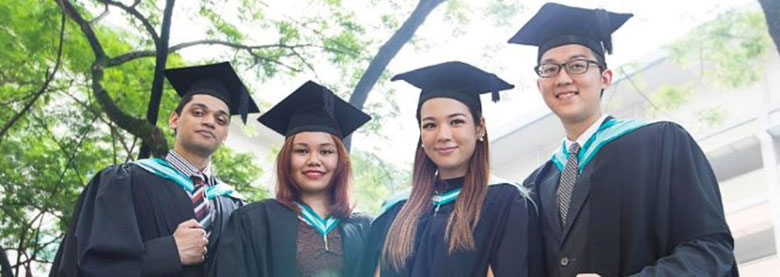 8. English as primary medium of instruction
English is used as the primary medium of instruction for all courses conducted at private higher educational institutions.
9. Kuala Lumpur ranks #1 in QS Top Universities ‘Most Affordable Cities for Students in 2016'
KL gained a near perfect score for affordability, with a winning combination of low living costs and relatively low tuition fees (averaging US$3,900 a year), according to QS Top Universities ‘Most Affordable Cities for Students in 2016’.
10. Average cost of Living in Malaysia is lower compared to other popular study destinations
The 2014 HSBC report also found that the average cost of living in Malaysia for international students is lower compared than other popular study destinations such as Australia, the UK and the US.
8. English as primary medium of instruction
English is used as the primary medium of instruction for all courses conducted at private higher educational institutions.
9. Kuala Lumpur ranks #1 in QS Top Universities ‘Most Affordable Cities for Students in 2016'
KL gained a near perfect score for affordability, with a winning combination of low living costs and relatively low tuition fees (averaging US$3,900 a year), according to QS Top Universities ‘Most Affordable Cities for Students in 2016’.
10. Average cost of Living in Malaysia is lower compared to other popular study destinations
The 2014 HSBC report also found that the average cost of living in Malaysia for international students is lower compared than other popular study destinations such as Australia, the UK and the US.
 11. The Mercer 2016 Quality of Living Rankings lists Kuala Lumpur among the top 10 cities in Asia-Pacific
In the Mercer 2016 Quality of Living Rankings, which looks at factors such as safety, health, education and public services, Kuala Lumpur was listed among the top 10 cities in Asia-Pacific, 2nd in South-east Asia, and 86 overall out of 230 cities.
12. Malaysia ranked 28th in the Global Peace Index 2015
Malaysia is also a politically stable and geographically safe country that enjoys a warm and humid tropical climate throughout the year. Learn more about Malaysia rankings in Global Peace Index 2015.
13. The diversity in Malaysia makes international students exposed to different cultures and traditions
The diversity in Malaysia means that international students are exposed to multiple languages, cultures and traditions as well as a wide variety of culinary treats and places of interest to explore.
14. Malaysia is a food haven and recreation is abundant
There are just so much to choose from, from local food courts to restaurants with regional favourites. Recreation is abundant in Malaysia with shopping malls, cinemas, gymnasiums, sports complexes, and more
15. Extensive international student support services:
11. The Mercer 2016 Quality of Living Rankings lists Kuala Lumpur among the top 10 cities in Asia-Pacific
In the Mercer 2016 Quality of Living Rankings, which looks at factors such as safety, health, education and public services, Kuala Lumpur was listed among the top 10 cities in Asia-Pacific, 2nd in South-east Asia, and 86 overall out of 230 cities.
12. Malaysia ranked 28th in the Global Peace Index 2015
Malaysia is also a politically stable and geographically safe country that enjoys a warm and humid tropical climate throughout the year. Learn more about Malaysia rankings in Global Peace Index 2015.
13. The diversity in Malaysia makes international students exposed to different cultures and traditions
The diversity in Malaysia means that international students are exposed to multiple languages, cultures and traditions as well as a wide variety of culinary treats and places of interest to explore.
14. Malaysia is a food haven and recreation is abundant
There are just so much to choose from, from local food courts to restaurants with regional favourites. Recreation is abundant in Malaysia with shopping malls, cinemas, gymnasiums, sports complexes, and more
15. Extensive international student support services:
- visa applications
- institution representative meets student at airport
- accommodation arrangement
- social and recreational activities
 16. Simple and hassle free system for international students to gain entry into Malaysia
Obtaining a visa and a student pass for full-time study in Malaysia is a quick and easy process.
17. Gateway to Southeast Asia
With the 9th best airport in the world, students will find it easy to explore the nearby ASEAN nations, such as Thailand, Singapore, Indonesia and Philippines, as well as further on, like China, Japan and Australia.
18. Affordable travel
Malaysia provides affordable travel within the region for students with low-cost airlines like AirAsia, AirAsia X, Cebu Pacific, Malindo Air, Tiger Airways, Scoot, and Jetstar Asia.
19. Work while you study
All international students with a valid student pass are allowed to work part time for a maximum of 20 hours per week during semester breaks or holidays of more than 7 days in specific sectors.
16. Simple and hassle free system for international students to gain entry into Malaysia
Obtaining a visa and a student pass for full-time study in Malaysia is a quick and easy process.
17. Gateway to Southeast Asia
With the 9th best airport in the world, students will find it easy to explore the nearby ASEAN nations, such as Thailand, Singapore, Indonesia and Philippines, as well as further on, like China, Japan and Australia.
18. Affordable travel
Malaysia provides affordable travel within the region for students with low-cost airlines like AirAsia, AirAsia X, Cebu Pacific, Malindo Air, Tiger Airways, Scoot, and Jetstar Asia.
19. Work while you study
All international students with a valid student pass are allowed to work part time for a maximum of 20 hours per week during semester breaks or holidays of more than 7 days in specific sectors.
 20. It’s easy to get around especially in larger cities like Kuala Lumpur
20. It’s easy to get around especially in larger cities like Kuala Lumpur
- Light Rapid Transit (LRT)
- Mass Rapid Transit (MRT) (to be completed soon)
- Taxis, Uber and GrabCar
- KL Monorail
- KTM Komuter
- MyRapid buses





About Malaysia
by StudyMalaysia.com on June 3, 2017 | Why Study in Malaysia, Top Stories
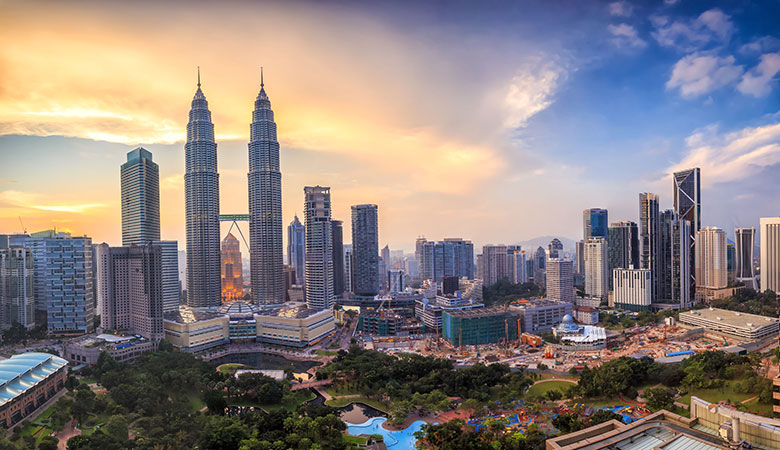
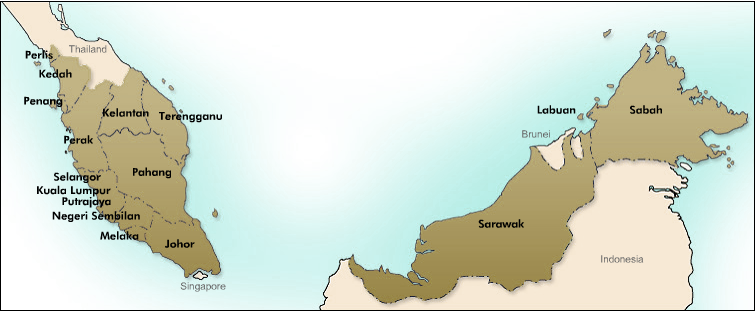


Malaysia in Brief
Capital: Kuala Lumpur
Administrative capital: Putrajaya
Official language: Bahasa Malaysia; English is widely spoken
Government: Constitutional monarchy, parliamentary democracy
Currency: Ringgit Malaysia (RM or MYR)
Land area: 328, 657 sq km
Population: 31, 127, 247 (as at 1 Jan 2016)
Time zone: GMT+8
Independence: 31 August 1957
So, you’re considering Malaysia as your higher education destination...
Great choice! We would like to be the first to welcome you to this colourful and amazing country.
And let us tell you that if you choose Malaysia as the place to further your studies, you’ll be among 122,061 other international students from 160 countries studying here. (Soaring Upwards: Malaysian Higher Education, MOHE, April 2016).
But if you’ve yet to decide, let us tell you a bit more about Malaysia and why this country could be ideal for you. We will also share what you need to know before making a decision – from the higher education opportunities available to you, to what to expect living as a student in Malaysia.
Capital: Kuala Lumpur
Administrative capital: Putrajaya
Official language: Bahasa Malaysia; English is widely spoken
Government: Constitutional monarchy, parliamentary democracy
Currency: Ringgit Malaysia (RM or MYR)
Land area: 328, 657 sq km
Population: 31, 127, 247 (as at 1 Jan 2016)
Time zone: GMT+8
Independence: 31 August 1957
The States of Malaysia
Peninsular Malaysia or West Malaysia comprises 11 states, namely, Johor, Kedah, Kelantan, Melaka, Negeri Sembilan, Pahang, Perak, Perlis, Penang, Selangor and Terengganu. Together with Sabah and Sarawak (located in East Malaysia), they make up the 13 states of Malaysia. There are three Federal Territories namely, Kuala Lumpur - the capital of Malaysia; Putrajaya - the Federal Government Administrative Centre; and Labuan - a ‘tax-free’ island located off the coast of Sabah.
The People of Malaysia
 Malaysia is proud to be a multi-racial country living together harmoniously. With about 31 million people, the three major races are Malay, Chinese and Indian. Other ethnicities include Peranakan (Straits Chinese), Orang Asli (indigenous people) and Eurasians (who are mainly of Portuguese, Dutch or British descent).
The people of Sarawak are made up of Dayaks, Kayans, Kenyahs, Kelabits (Orang Ulu), Melanaus, Sarawak Malays, Penans and Lun Bawang (Muruts). In Sabah, the indigenous groups consist of the Kadazans/Dusuns, Orang Sungei, Bisayas, Bajaus, Muruts, Rungus, Bruneis, Lotuds and many other subgroups.
Malaysia is proud to be a multi-racial country living together harmoniously. With about 31 million people, the three major races are Malay, Chinese and Indian. Other ethnicities include Peranakan (Straits Chinese), Orang Asli (indigenous people) and Eurasians (who are mainly of Portuguese, Dutch or British descent).
The people of Sarawak are made up of Dayaks, Kayans, Kenyahs, Kelabits (Orang Ulu), Melanaus, Sarawak Malays, Penans and Lun Bawang (Muruts). In Sabah, the indigenous groups consist of the Kadazans/Dusuns, Orang Sungei, Bisayas, Bajaus, Muruts, Rungus, Bruneis, Lotuds and many other subgroups.

Common Languages
The country’s official language is Bahasa Melayu (Malay language), but many other languages and dialects are used in Malaysia. Mandarin is widely spoken by the Malaysian Chinese besides dialects like Cantonese, Hokkien, Hakka, Teo Chew, Foo Chow, Hock Chew, and Hainanese. The Malaysian Indian communities speak dialects like Tamil, Hindi, Telugu, Malayalam, Punjabi and Sri Lankan, among others.
In Malaysia, English language is one of the compulsory subjects in schools. It is widely used in everyday business communications, the tourism industry, radio and television broadcasting stations, commerce, and is also the medium of instruction at private higher educational institutions. Most Malaysians use English as their second language, hence, foreigners who speak English would be able to communicate effectively with Malaysians.
Religions in Malaysia
Islam is the official religion of Malaysia but other faiths like Buddhism, Christianity, Hinduism, Taoism and Sikhism are practised freely by all Malaysians. The Federal Constitution guarantees freedom of religion in the country.
Suraus (Musli prayer rooms) can be found in most buildings including colleges and universities. Mosques are found in every district while Christian churches, Buddhist temples and Hindu temples can be found throughout Malaysia.
Location and Climate
Malaysia is located in south-east Asia, 7 degrees north of the equator, GMT +8. Its neighbours are Thailand, Singapore, Brunei and Indonesia. Malaysia is located in a zone that does not experience drastic weather changes or serious natural calamities such as earthquakes and tornados.
Malaysia has a pleasant tropical climate and is generally hot and humid throughout the year. Temperatures are around 30-33°C during the day and 25°C at night in the lowland areas and between 21°C and 28°C in the highlands. Light cotton, cool and casual clothing is recommended all year round.
Most of the facilities on campuses are air-conditioned so students like you can study in comfort.
The north-east monsoon blows from the months of November to April and bring heavy rains to the east coast of Peninsular Malaysia as well as to Sabah and Sarawak. The south-west monsoon season from May to October is a drier period although the tropical climate means that rain and thunderstorms can be expected from time to time.
Did You Know
Malaysia was rated the world’s 12th most preferred study destination by international students in 2014 according to UNESCO. The higher education institutions in Malaysia have captured a substantial market share of the world’s international students in the fast growing sector of private education. There are around 1.25 million Malaysian students enrolled in tertiary education institutions in Malaysia, and the number of international students making their way here is increasing every year.
Malaysia was rated the world’s 12th most preferred study destination by international students in 2014 according to UNESCO. The higher education institutions in Malaysia have captured a substantial market share of the world’s international students in the fast growing sector of private education. There are around 1.25 million Malaysian students enrolled in tertiary education institutions in Malaysia, and the number of international students making their way here is increasing every year.
Food in Malaysia
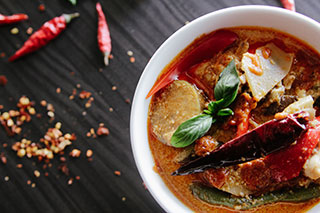 With its delightful varieties of cultures and traditions, Malaysia is undeniably a food haven that offers a sumptuous range of cuisine. Malaysians love their food and most will agree that there is no other country in the world that has as much variety of food that tastes so good. The price of the food is so affordable that you can eat out most of the time during your stay in Malaysia.
Malay, Chinese and Indian cuisine are easily available at most restaurants and hawker stalls. At the same time, there are many restaurants that serve cuisine from all over the world - American, Middle Eastern, Thai, Italian, German, Spanish, French, Japanese, Korean, and many others. Fastfood outlets serving burgers and pizza can be found easily. Halal food is available everywhere and there are ample eateries that offer vegetarian food. Eating out in major cities is convenient as many restaurants are open 24 hours.
With its delightful varieties of cultures and traditions, Malaysia is undeniably a food haven that offers a sumptuous range of cuisine. Malaysians love their food and most will agree that there is no other country in the world that has as much variety of food that tastes so good. The price of the food is so affordable that you can eat out most of the time during your stay in Malaysia.
Malay, Chinese and Indian cuisine are easily available at most restaurants and hawker stalls. At the same time, there are many restaurants that serve cuisine from all over the world - American, Middle Eastern, Thai, Italian, German, Spanish, French, Japanese, Korean, and many others. Fastfood outlets serving burgers and pizza can be found easily. Halal food is available everywhere and there are ample eateries that offer vegetarian food. Eating out in major cities is convenient as many restaurants are open 24 hours.

Malaysian food that are most popular with international students:
- Chicken rice
- Roti canai
- Fried rice
- Satay
- Nasi lemak
Favourite food of students:
- Burgers and fries
- Pizza
- ‘Mixed rice’ (rice with a combination of meat and vegetable side dishes)
Colourful Culture Everywhere
 “Since coming to Malaysia to study I’ve experienced different cultures, festivals, languages, foods! Chinese New Year was a highlight as it combined all four.”
Zoe Tranter, Australia
“Since coming to Malaysia to study I’ve experienced different cultures, festivals, languages, foods! Chinese New Year was a highlight as it combined all four.”
Zoe Tranter, Australia
Currently pursuing Bachelor of Arts in Monash University Malaysia
Malaysians celebrate the festivals of different communities together, giving them the opportunity to learn more about various cultures. During these festivities, the official residences of Malaysian leaders are open to the public. Malaysians also invite guests to their homes for a friendly get-together while partaking in the festivity. It is no wonder that many tourists have remarked that Malaysians are very hospitable, welcoming and warmhearted.
Muslims from other parts of the world can definitely feel at home here with Muslim celebrations like Hari Raya Aidilfitri. The Chinese celebrate Wesak Day (a Buddhist festival) and the Lunar New Year. For Hindus, Deepavali and Thaipusam are important festivals while the Sikhs celebrate Vasakhi. Christmas is celebrated by Christians in Malaysia; Pesta Kaamatan is celebrated by the people of Sabah; and the Dayak Harvest festival, marked by family reunions, cultural dances, kenduri (feasts), games, beauty contests and public entertainments, is celebrated in Sarawak.

“Since coming to Malaysia to study I’ve experienced different cultures, festivals, languages, foods! Chinese New Year was a highlight as it combined all four.”
Zoe Tranter, Australia
Currently pursuing Bachelor of Arts in Monash University Malaysia
Currently pursuing Bachelor of Arts in Monash University Malaysia
The Economy of Malaysia
When the nation first gained independence in 1957, the economy was completely dependent on commodities like rubber, tin and palm oil. Since the 1970s, the country has been able to transform its economy to become a dynamic, vibrant and industrialised nation that has resulted in the industrial and services sectors contributing to almost 90% of the Gross Domestic Product (GDP).
“Malaysia has a newly industrialised market economy, which is relatively open and stateoriented. The economy of Malaysia is the third largest in Southeast Asia, after the much more populous Indonesia and Thailand, and 35th largest in the world. Malaysia is also the third richest in Southeast Asia by GDP per capita values, after the city states of Singapore and Brunei. Malaysia’s economy is one of the most competitive in the world, ranking 14th in 2015."
Wikipedia
“Malaysia is a highly open, uppermiddle income economy. Malaysia was one of 13 countries identified by the Commission on Growth and Development in its 2008 Growth Report to have recorded average growth of more than 7 percent per year for 25 years or more."
World Bank, April 2016
“Malaysia is a highly open, uppermiddle income economy. Malaysia was one of 13 countries identified by the Commission on Growth and Development in its 2008 Growth Report to have recorded average growth of more than 7 percent per year for 25 years or more.”
World Bank, April 2016
“‘Malaysia remains a good example of a country that has ‘converted’ from commodity-dependence to a diversified modern economy,’ says World Bank economist Kaushik Basu."
New Straits Times, 29 March 2016
The average GDP growth of Malaysia since 2010 has been 5.6%. The gross national income per capital has increased to RM36,000 in 2015 from RM28,000 in 2010. The country’s economy is expected to grow moderately lower at 4 to 4.5 in 2016 against the backdrop of a global economy slowdown. The country’s foreign exchange reserves was USD97,025 million in March 2016.
“Malaysia has a newly industrialised market economy, which is relatively open and stateoriented. The economy of Malaysia is the third largest in Southeast Asia, after the much more populous Indonesia and Thailand, and 35th largest in the world. Malaysia is also the third richest in Southeast Asia by GDP per capita values, after the city states of Singapore and Brunei. Malaysia’s economy is one of the most competitive in the world, ranking 14th in 2015."
Wikipedia
“Malaysia is a highly open, uppermiddle income economy. Malaysia was one of 13 countries identified by the Commission on Growth and Development in its 2008 Growth Report to have recorded average growth of more than 7 percent per year for 25 years or more."
World Bank, April 2016
“Malaysia is a highly open, uppermiddle income economy. Malaysia was one of 13 countries identified by the Commission on Growth and Development in its 2008 Growth Report to have recorded average growth of more than 7 percent per year for 25 years or more.”
World Bank, April 2016
“‘Malaysia remains a good example of a country that has ‘converted’ from commodity-dependence to a diversified modern economy,’ says World Bank economist Kaushik Basu."
New Straits Times, 29 March 2016
The Malaysian Currency
Monetary transactions are conducted in Ringgit Malaysia (RM or MYR) and sen. The notes are in denominations of RM1, RM5, RM10, RM50, and RM100. Coins are issued in 5, 10, 20 and 50 sen pieces. Credit cards are also widely accepted at commercial businesses, while travellers’ cheques can be cashed at any commercial bank, hotel or authorised money changers.
Achievements of Malaysia
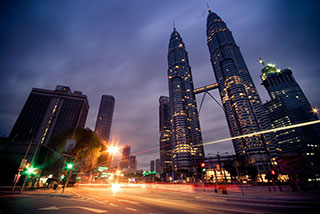
-
In the 2016 World Competitiveness Yearbook published by the Swiss-based Institute for Management Development (IMD), Malaysia ranked 19 among the most competitive countries in the world.
-
Malaysia was ranked 5th by International Living Magazine under the category of ‘The World’s Top Retirement Havens’ for 2016.
-
Malaysia was ranked 11th on the list of most-visited countries for 2014 by the United Nations World Tourism Organization (UNWTO) under its World Tourism ranking.
-
Malaysia has a tradition of warm hospitality and welcomes people from around the world. In 2015, based on HSBC's Expat Explorer Survey, where 21,950 expatriates from 198 countries took part in the online survey, Malaysia ranked 3rd top country where expats feel at home in less than a year.
-
Lonely Planet, one of the most widely read travel guidebook, picked Malaysia as one of the world’s top 10 travel destinations for 2014. Malaysia, the only Asian country to have made the list in Lonely Planet’s Best in Travel 2014 – Top 10, was ranked 10th, due to the country’s ability in ‘rolling out an array of new attractions’.
-
In Expedia UK’s World’s 25 Best Shopping Cities list, Kuala Lumpur was ranked No.5. The city received its high ranking for its diversity, from being home to designer names and international chains to local products. Shoppers can look forward to getting great value in this city. There are no shortage of malls in Malaysia. Food, entertainment and shopping – Malaysia is also home to 1 Utama Shopping Mall, the 6th largest shopping mall in the world.
-
According to the Geneva-based World Economic Forum, Malaysia ranked the 18th most competitive economy in the world in The Global Competitiveness Report 2015-2016. The report assesses the competitiveness landscape of 140 economies, providing insight into the drivers of their productivity and prosperity.
-
In the World Bank report titled ‘Doing Business 2016’ which ranks economies based on their ‘ease of doing business’, Malaysia emerged as the 18th most business-friendly nation in the world out of the 185 economies/countries surveyed during the period from January 2014 to June 2015.
-
Malaysia is the 26th most globalised country out of 207 countries surveyed in the world, according to the KOF Index of Globalisation 2015. This index measures the country’s economic, social and political dimensions of globalisation.
-
Kuala Lumpur is still among the least expensive cities in terms of cost of living when compared with other major Asian cities. Kuala Lumpur was voted the most affordable city in the world for students, according to QS Best student Cities Survey 2015/16.
-
In ECA International’s global ranking of expatriate living conditions for 2015, Kuala Lumpur and George Town both ranked 16th in Asia and 118th in the world, while Johor Baru ranked 21st in Asia and 126th in the world.
-
Singapore-based Muslim travel consultancy Crescent Rating conducted a study which ranked countries on how well they catered to the growing number of Muslim holidaymakers seeking halal or Islam-compliant food and services. The survey ranked Malaysia as the world’s top Muslim-friendly holiday destination; and Egypt, Turkey, United Arab Emirates, Saudi Arabia and Singapore as runners-up.
-
In International Living’s ‘The World’s Best Places to Retire in 2016’, Malaysia was rated the 5th best country for retirement.
-
Malaysia is ranked among Asia Pacific’s top 10 foreign direct investment (FDI) hotspots, according to a study by US-based global information company IHS Inc., who also referred to Malaysia as Asia’s next advanced economy. The IHS report said that Malaysia’s economy is forecast to achieve a per capita GDP of US$20,000 by 2025, with total GDP exceeding US$1 trillion by 2030.
-
According to Mercer’s 18th annual Quality of Living survey, Kuala Lumpur is the second highest ranking city in Southeast Asia, and 86th in the world. Mercer evaluates local living conditions grouped in 10 categories: Political and social environment, Economic environment, Socio-cultural environment, Medical and health considerations, Schools and education, Public services and transportation, Recreation, Consumer goods, Housing, and Natural environment.

In the 2016 World Competitiveness Yearbook published by the Swiss-based Institute for Management Development (IMD), Malaysia ranked 19 among the most competitive countries in the world.
Malaysia was ranked 5th by International Living Magazine under the category of ‘The World’s Top Retirement Havens’ for 2016.
Malaysia was ranked 11th on the list of most-visited countries for 2014 by the United Nations World Tourism Organization (UNWTO) under its World Tourism ranking.
Malaysia has a tradition of warm hospitality and welcomes people from around the world. In 2015, based on HSBC's Expat Explorer Survey, where 21,950 expatriates from 198 countries took part in the online survey, Malaysia ranked 3rd top country where expats feel at home in less than a year.
Lonely Planet, one of the most widely read travel guidebook, picked Malaysia as one of the world’s top 10 travel destinations for 2014. Malaysia, the only Asian country to have made the list in Lonely Planet’s Best in Travel 2014 – Top 10, was ranked 10th, due to the country’s ability in ‘rolling out an array of new attractions’.
In Expedia UK’s World’s 25 Best Shopping Cities list, Kuala Lumpur was ranked No.5. The city received its high ranking for its diversity, from being home to designer names and international chains to local products. Shoppers can look forward to getting great value in this city. There are no shortage of malls in Malaysia. Food, entertainment and shopping – Malaysia is also home to 1 Utama Shopping Mall, the 6th largest shopping mall in the world.
According to the Geneva-based World Economic Forum, Malaysia ranked the 18th most competitive economy in the world in The Global Competitiveness Report 2015-2016. The report assesses the competitiveness landscape of 140 economies, providing insight into the drivers of their productivity and prosperity.
In the World Bank report titled ‘Doing Business 2016’ which ranks economies based on their ‘ease of doing business’, Malaysia emerged as the 18th most business-friendly nation in the world out of the 185 economies/countries surveyed during the period from January 2014 to June 2015.
Malaysia is the 26th most globalised country out of 207 countries surveyed in the world, according to the KOF Index of Globalisation 2015. This index measures the country’s economic, social and political dimensions of globalisation.
Kuala Lumpur is still among the least expensive cities in terms of cost of living when compared with other major Asian cities. Kuala Lumpur was voted the most affordable city in the world for students, according to QS Best student Cities Survey 2015/16.
In ECA International’s global ranking of expatriate living conditions for 2015, Kuala Lumpur and George Town both ranked 16th in Asia and 118th in the world, while Johor Baru ranked 21st in Asia and 126th in the world.
Singapore-based Muslim travel consultancy Crescent Rating conducted a study which ranked countries on how well they catered to the growing number of Muslim holidaymakers seeking halal or Islam-compliant food and services. The survey ranked Malaysia as the world’s top Muslim-friendly holiday destination; and Egypt, Turkey, United Arab Emirates, Saudi Arabia and Singapore as runners-up.
In International Living’s ‘The World’s Best Places to Retire in 2016’, Malaysia was rated the 5th best country for retirement.
Malaysia is ranked among Asia Pacific’s top 10 foreign direct investment (FDI) hotspots, according to a study by US-based global information company IHS Inc., who also referred to Malaysia as Asia’s next advanced economy. The IHS report said that Malaysia’s economy is forecast to achieve a per capita GDP of US$20,000 by 2025, with total GDP exceeding US$1 trillion by 2030.
According to Mercer’s 18th annual Quality of Living survey, Kuala Lumpur is the second highest ranking city in Southeast Asia, and 86th in the world. Mercer evaluates local living conditions grouped in 10 categories: Political and social environment, Economic environment, Socio-cultural environment, Medical and health considerations, Schools and education, Public services and transportation, Recreation, Consumer goods, Housing, and Natural environment.
Top 10 Major Export Products 2015
- Electrical & Electronic Products (35.6%)
- Chemicals & Chemical Products (7.1%)
- Petroleum Products (7.0%)
- Liquefied Natural Gas (LNG) (6.0%)
- Palm Oil (5.1%)
- Machinery, appliances & parts (4.6%)
- Manufactures of Metal (4.5%)
- Optical & Scientific Equipment (3.3%)
- Crude Petroleum (3.3%)
- Rubber Products (2.6%)
- Other Products (20.7%)
Places of Interest in Malaysia
What are some popular holiday spots for students in Malaysia?
- Langkawi island, Kedah
- Genting Highlands, Pahang
- Georgetown and Melaka – UNESCO World Heritage Cities
- Taman Negara National Park, Pahang
- Legoland, Johor
- Mount Kinabalu, Sabah
- Mulu Caves, Sarawak
- Pulau Perhentian, Terengganu
- Kuala Lumpur
- Cameron Highlands, Pahang
International students studying in Malaysia will find all its 13 states fascinating and enjoyable to explore. The multi-ethnic Malaysian society has interwoven its influence with the natural environment and this provides interesting spots and historical landmarks for all to visit.
Malaysia is endowed with a rich natural heritage. It has a 130-million-year-old rainforest that is home to a wide variety of flora and fauna. Decorated with beautiful coastlines, idyllic beaches, secluded islands and majestic mountains, Malaysia is an excellent destination for outdoor and recreational activities. Malaysia takes pride in having three properties inscribed on the ‘UNESCO World Heritage Sites’ list. They are the historic cities of George Town (Penang) and Melaka; Gunung Mulu National Park; and Kinabalu National Park.
Peninsular Malaysia’s long coastline along with the many coral-fringed islands and coasts of Sabah and Sarawak, Malaysia provides many magnificent beaches for a blissful and relaxing holiday.
Visitors will never be at as loss for a place to stay in Malaysia. There is accommodation to suit everybody’s need and budget. Accommodation rates are among the cheapest in this region. From budget to five-star hotels and resorts, and even home stay programmes at the countryside, visitors will be spoilt for choice.
- Langkawi island, Kedah
- Genting Highlands, Pahang
- Georgetown and Melaka – UNESCO World Heritage Cities
- Taman Negara National Park, Pahang
- Legoland, Johor
- Mount Kinabalu, Sabah
- Mulu Caves, Sarawak
- Pulau Perhentian, Terengganu
- Kuala Lumpur
- Cameron Highlands, Pahang
Transportation in Malaysia
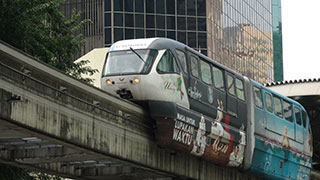 Malaysia has excellent infrastructure which makes commuting affordable and convenient. The country has well-connected transportation and communication systems within the country and with the rest of the world. Malaysia has extensive road, rail, air and sea links.
Malaysia is a major air transport hub in Southeast Asia services by the national airline Malaysia Airlines (MAS); and low cost carriers like AirAsia, FireFlyz and Malindo. Malaysia’s state-of-the-art international airport, KLIA (Kuala Lumpur International Airport) is one of the largest international airport in the region. A second airport, KLIA2, was built to meet the growing demand in the low-cost travel industry. KLIA2 can accommodate up to 45 million passengers a year.
Malaysia is connected by an excellent network of tarred roads and rail system. The 772-km long North-South Expressway is the longest and most impressive modern highway that links the northern-most part of the Peninsular (Bukit Kayu Hitam in Kedah near the Malaysia-Thai border) to Johor Bahru at the southern portion of Peninsular Malaysia (bordering Singapore).
Many Malaysians own cars or motorcycles, and this is the main mode of transport within cities and towns. Public transportation is abundant and affordable; these include town and interstate buses, taxis, the Monorail and Light Rail Transit (LRT) within Kuala Lumpur as well as KTM and e-KTM (Keretapi Tanah Melayu) trains. The KL Monorail interfaces with other rail systems that include the KL Express Rail Link (ERL) which is linked to the KL International Airport at KL Sentral Station.
Malaysia has excellent infrastructure which makes commuting affordable and convenient. The country has well-connected transportation and communication systems within the country and with the rest of the world. Malaysia has extensive road, rail, air and sea links.
Malaysia is a major air transport hub in Southeast Asia services by the national airline Malaysia Airlines (MAS); and low cost carriers like AirAsia, FireFlyz and Malindo. Malaysia’s state-of-the-art international airport, KLIA (Kuala Lumpur International Airport) is one of the largest international airport in the region. A second airport, KLIA2, was built to meet the growing demand in the low-cost travel industry. KLIA2 can accommodate up to 45 million passengers a year.
Malaysia is connected by an excellent network of tarred roads and rail system. The 772-km long North-South Expressway is the longest and most impressive modern highway that links the northern-most part of the Peninsular (Bukit Kayu Hitam in Kedah near the Malaysia-Thai border) to Johor Bahru at the southern portion of Peninsular Malaysia (bordering Singapore).
Many Malaysians own cars or motorcycles, and this is the main mode of transport within cities and towns. Public transportation is abundant and affordable; these include town and interstate buses, taxis, the Monorail and Light Rail Transit (LRT) within Kuala Lumpur as well as KTM and e-KTM (Keretapi Tanah Melayu) trains. The KL Monorail interfaces with other rail systems that include the KL Express Rail Link (ERL) which is linked to the KL International Airport at KL Sentral Station.

Events and Festivals
Here are some events and festivals you can look forward to during your sojourn as an international student:
Explore the differents events in Malaysia
- Le Tour de Langkawi - one of the top cycling races in the world (February)
- Langkawi International Maritime and Aerospace Exhibition (LIMA) (held once every 2 years in March)
- Putrajaya International Hot Air Balloon Fiesta (March)
- Borneo Deathmarch 250k Ultra Marathon (April)
- Borneo Jazz Festival (May)
- Penang International Dragon Boat Festival (May)
- International Pahang River Rafting Expedition in Kuala Lipis (April/May)
- Fraser's Hill International Bird Race (May)
- Kelantan International Kite Fest (May)
- Floria – annual flower and garden festival (May)
- Penang International Lion Dance On Stilts Championship (June)
- Sabah International Folklore Festival (July)
- The Japanese Bon Odori Festival in Penang and Shah Alam (July)
- The Rainforest World Music Festival, Sarawak (August)
- George Town Festival, Penang (August)
- Port Dickson International Triathlon (August)
- Standard Chartered KL Marathon 2016 (August)
- Malaysian Formula 1 Grand Prix, Sepang International Circuit (Sept/Oct)
- Mt Kinabalu International Climbathon (October)
- Tamu Besar, traditional open-air market usually held in Kota Belud, Sabah (October)
- Le Tour de Langkawi - one of the top cycling races in the world (February)
- Langkawi International Maritime and Aerospace Exhibition (LIMA) (held once every 2 years in March)
- Putrajaya International Hot Air Balloon Fiesta (March)
- Borneo Deathmarch 250k Ultra Marathon (April)
- Borneo Jazz Festival (May)
- Penang International Dragon Boat Festival (May)
- International Pahang River Rafting Expedition in Kuala Lipis (April/May)
- Fraser's Hill International Bird Race (May)
- Kelantan International Kite Fest (May)
- Floria – annual flower and garden festival (May)
- Penang International Lion Dance On Stilts Championship (June)
- Sabah International Folklore Festival (July)
- The Japanese Bon Odori Festival in Penang and Shah Alam (July)
- The Rainforest World Music Festival, Sarawak (August)
- George Town Festival, Penang (August)
- Port Dickson International Triathlon (August)
- Standard Chartered KL Marathon 2016 (August)
- Malaysian Formula 1 Grand Prix, Sepang International Circuit (Sept/Oct)
- Mt Kinabalu International Climbathon (October)
- Tamu Besar, traditional open-air market usually held in Kota Belud, Sabah (October)
Long-Stay in Malaysia – Malaysia My Second Home Programme
 "I chose to study in Malaysia because it is easy to adapt to life in this country, with its multi-cultural community and widelyspoken English."
Ahmad Al Mallah, Syria
"I chose to study in Malaysia because it is easy to adapt to life in this country, with its multi-cultural community and widelyspoken English."
Ahmad Al Mallah, Syria
SEGi University
Coming to Malaysia as an international student doesn’t need to be a solitary affair. Malaysia foreigners a perfect place for retirement and leisure.
The Malaysia My Second Home Programme allows foreigners, who fulfill required criteria, to stay in Malaysia on a multiple-entry social visit pass. The Social Visit Pass is initially for a period of 10 years, and is renewable. It is open to citizens of all countries recognised by Malaysia regardless of race, religion, gender or age. Applicants are allowed to bring their spouses and unmarried children below the age of 21 as dependents to reside in Malaysia. Under certain conditions, it even allows you to hold part-time employment or to have a business in the country and other financial benefits.
All MM2H applications are to be submitted through licensed MM2H agents only. No individual applications or third party applications will be entertained. For more information, please log onto http://www.mm2h.gov.my

"I chose to study in Malaysia because it is easy to adapt to life in this country, with its multi-cultural community and widelyspoken English."
Ahmad Al Mallah, Syria
SEGi University
SEGi University
Why Malaysia is an excellent long-stay destination:
-
Among the lowest cost of living in Asia while providing a high quality of life with modern infrastructure, amenities and facilities in place.
-
Pleasant, warm and sunny weather with moderate rain throughout the year.
-
Politically stable and is one of the safest countries in the world with a relatively low crime rate.
-
The country practises religious and cultural freedom and harmonious intermingling of different cultures and traditions.
-
English is widely spoken throughout the country
-
Modern infrastructure that provides well connected, up-to-date, efficient transportation and communications systems
-
Quality education at all levels is available at a reasonable cost. Malaysia has one of the best-developed and high quality educational systems with a choice of public and private and international schools of repute
-
Efficient, international quality and reasonably priced medical facilities
-
Quality residences of all kinds, terrace houses, semi-detached, bungalows, apartments and condominiums are available all over the country. It is also possible to build your home in resort-like environments on the beaches, near the jungle, or the centre of bustling city centres
-
An exquisite variety of cuisine with food from all over the world at very reasonable prices
-
Lots of choices for individual and family recreation and enjoyment - from theme parks, jungles, mountains, sports, islands and beaches, water sports and a great number of golf courses
Among the lowest cost of living in Asia while providing a high quality of life with modern infrastructure, amenities and facilities in place.
Pleasant, warm and sunny weather with moderate rain throughout the year.
Politically stable and is one of the safest countries in the world with a relatively low crime rate.
The country practises religious and cultural freedom and harmonious intermingling of different cultures and traditions.
English is widely spoken throughout the country
Modern infrastructure that provides well connected, up-to-date, efficient transportation and communications systems
Quality education at all levels is available at a reasonable cost. Malaysia has one of the best-developed and high quality educational systems with a choice of public and private and international schools of repute
Efficient, international quality and reasonably priced medical facilities
Quality residences of all kinds, terrace houses, semi-detached, bungalows, apartments and condominiums are available all over the country. It is also possible to build your home in resort-like environments on the beaches, near the jungle, or the centre of bustling city centres
An exquisite variety of cuisine with food from all over the world at very reasonable prices
Lots of choices for individual and family recreation and enjoyment - from theme parks, jungles, mountains, sports, islands and beaches, water sports and a great number of golf courses
Public Holidays in Malaysia
All states observe Saturdays as a half working day and Sundays as non-working days; with the exception of Johor, Kedah, Kelantan and Terengganu which observe Fridays as a half- day and Saturdays as non-working days.
Public holidays observed in Malaysia include national and state holidays. The former is observed by all states while every state has its own set of holidays.
References:
- Study in Malaysia Handbook (9th International Edition)
- www.moe.gov.my
- www.mida.gov.my
- www.matrade.gov.my
- www.statistics.gov.my
- www.tourismmalaysia.gov.my
- Various local newspaper reports
- Various websites related to ranking of Malaysia’s performance & achievement
(Note: All the rates quoted above may not be up to date and are subject to change without prior notice)
Affordable, Quality-Assured Education
by StudyMalaysia.com on June 1, 2017 | Why Study in Malaysia, Top Stories
 The cost-effective, high quality tertiary education is one of the many reasons why the current 125,000 international students choose Malaysia.
Here’s an example of how an international students can enjoy substantial savings. By choosing to study at a foreign university branch campus in Malaysia, the student will study the same course and will be awarded the same degree as that of the main campus; however, the student will pay lower tuition fees and spend less as the cost of living in Malaysia is considerably lower. In addition, depending on the course, students can choose whether to spend part of their studies at the main campus.
The table below shows a cost comparison between studying at Heriot Watt University Malaysia and Heriot Watt University UK, and the estimated savings depending on how many years is spent studying in Malaysia and the UK respectively.
The cost-effective, high quality tertiary education is one of the many reasons why the current 125,000 international students choose Malaysia.
Here’s an example of how an international students can enjoy substantial savings. By choosing to study at a foreign university branch campus in Malaysia, the student will study the same course and will be awarded the same degree as that of the main campus; however, the student will pay lower tuition fees and spend less as the cost of living in Malaysia is considerably lower. In addition, depending on the course, students can choose whether to spend part of their studies at the main campus.
The table below shows a cost comparison between studying at Heriot Watt University Malaysia and Heriot Watt University UK, and the estimated savings depending on how many years is spent studying in Malaysia and the UK respectively.

| Engineering (Malaysia & UK) | Total Cost | Savings | |
|---|---|---|---|
| MYR | GBP | MYR | |
| Number of years (4+0) (=4 yrs in Malaysia) Total cost (MFP & 4+0) | 0 283,200 | - 43,569 | - 434,620 |
| Number of years overseas (2+2) (=2yrs in Malaysia + 2 yrs in UK Total cost (MFP & 2+2) | 2 470,280 | - 72,351 | - 247,540 |
| Number of years overseas(1+3) Total cost (MFP & 1+3) | 3 574,935 | - 88,452 | - 142,885 |
| Number of years overseas(0+4)(= 4 yrs in UK) Total cost (A-levels & 0+4) | 4 717,820 | - 110,434 | - - |
Exchange rate: 1GBP=RM6.50
Source: Heriot-Watt University Malaysia
The Quality Assurance System and Accreditation
A college or university education remains one of the best investments students can make for their future. While affordability is an important factor for students when choosing a college or university, they should not compromise the quality of education they deserve.
As such, students from all over the world (like you!) would be pleased to know that higher learning institutions in Malaysia are governed by a stringent quality assurance system.
- The Malaysian Qualifications Agency
- ISO 9001 certification
- Articulation agreements
- Awards
- My Quest and SETARA rating systems
- Highly qualified lecturers and excellent academic facilities
- The Malaysian Qualifications Agency
- ISO 9001 certification
- Articulation agreements
- Awards
- My Quest and SETARA rating systems
- Highly qualified lecturers and excellent academic facilities
1. The Malaysian Qualifications Agency
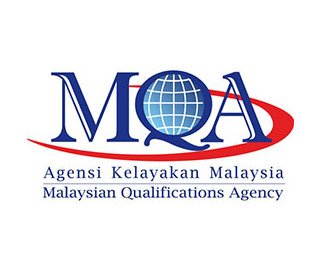 The national quality assurance agency of Malaysia is known as the Malaysian Qualifications Agency (MQA) which was established on 1 November 2007 under the Malaysian Qualifications Agency Act 2007. Its key function is to ensure that all programmes and qualifications offered by higher education providers meet the minimum standard set out by MQA.
In general, MQA quality assures programmes through two distinct processes:
The national quality assurance agency of Malaysia is known as the Malaysian Qualifications Agency (MQA) which was established on 1 November 2007 under the Malaysian Qualifications Agency Act 2007. Its key function is to ensure that all programmes and qualifications offered by higher education providers meet the minimum standard set out by MQA.
In general, MQA quality assures programmes through two distinct processes:
-
Provisional Accreditation - an exercise that determines whether a programme has met the minimum quality requirements preliminary to Full Accreditation.
-
Full Accreditation - an assessment exercise that ascertains if the teaching, learning and all other related activities of a programme provided by a higher education provider have met the quality standards and are in compliance with the Malaysian Qualifications Framework (MQF).
MQF provides a unified system to interlink all the qualifications awarded in and to serve as a reference point for all Malaysian national qualifications.
It develops and classifies qualifications based on a set of criteria that has been approved nationally and is at par with international good practices at the level of learning attained by the learners. This includes learning outcomes achieved and a credit system which is based on the learner’s academic load. All the qualifications in the framework are based upon four classifications, which are: learning outcomes; credit; objectives; and field of study.
An example of MQA’s continual cooperation with quality assurance bodies from other countries took place in May 2016. MQA and Quality and Qualifications Ireland (QQI) signed a Memorandum of Arrangement for cooperation in the field of quality assurance in areas such as information exchange, staff development, exchange of experts and joint research. It is hoped that MQA and QQI will undertake a comparability exercise on quality assurance and qualifications systems of both countries to help ease the recognition of qualifications offered in Malaysia and Ireland.
 The national quality assurance agency of Malaysia is known as the Malaysian Qualifications Agency (MQA) which was established on 1 November 2007 under the Malaysian Qualifications Agency Act 2007. Its key function is to ensure that all programmes and qualifications offered by higher education providers meet the minimum standard set out by MQA.
The national quality assurance agency of Malaysia is known as the Malaysian Qualifications Agency (MQA) which was established on 1 November 2007 under the Malaysian Qualifications Agency Act 2007. Its key function is to ensure that all programmes and qualifications offered by higher education providers meet the minimum standard set out by MQA.
Provisional Accreditation - an exercise that determines whether a programme has met the minimum quality requirements preliminary to Full Accreditation.
Full Accreditation - an assessment exercise that ascertains if the teaching, learning and all other related activities of a programme provided by a higher education provider have met the quality standards and are in compliance with the Malaysian Qualifications Framework (MQF).
What does MQA do?
- implement the national framework known as MQF
- accredit higher educational programmes and qualifications
- supervise and regulate the quality and standard of higher education providers
- establish and maintain the Malaysian Qualifications Register
- facilitate the recognition and articulation of qualifications
- evaluate and assess the comparability of foreign qualifications against the MQF
- implement the national framework known as MQF
- accredit higher educational programmes and qualifications
- supervise and regulate the quality and standard of higher education providers
- establish and maintain the Malaysian Qualifications Register
- facilitate the recognition and articulation of qualifications
- evaluate and assess the comparability of foreign qualifications against the MQF
2. ISO 9001 certification
Many higher education institutions in Malaysia have implemented or are working towards implementing the ISO 9001 standard, a mechanism that provides clear guidelines for the top management of an institution or university to improve the effectiveness of their education system.
Properly implemented, ISO 9001 will bring the following to the education institution:
- a shift in emphasis from a focus on the quality of the teacher towards the performance of the institution as a whole
- the introduction of new or additional quality control mechanisms in higher education
- the creation of quality assurance systems and performance-related mechanisms in continuing education and training
More and more colleges and universities have sought to improve their educational quality through a better quality management system and have implemented ISO 9001 as part of that process.
Source: Advisera, 'Should universities implement ISO 9001?'
3. Articulation agreements with foreign university partners and exemptions by professional bodies
Some colleges or universities in Malaysia have articulation agreements and credit recognition arrangements with foreign university partners that document formal agreements for the provision of academic credit or qualification recognition. It is also common for some professional bodies to offer exemptions of certain modules or subjects that are deemed to have met the minimum study requirements. These arrangements undergo stringent audits before they are approved; and are a testimony of the quality of education offered by private colleges and universities in Malaysia.
4. Awards from competitions and industry recognition
In its quest to be industry relevant, many colleges and universities take part in competitions that allow their students to gain exposure with the industry. From showcasing their inventions at an expo to carrying out a business plan, students can rest assured that their learning is not confined to the classroom.
5. MyQuest and SETARA rating systems
The Ministry of Higher Education (MOHE) carries out two official rating systems for higher learning institutions:
-
The Malaysia Quality Evaluation System (MYQUEST) was introduced in 2011 for private colleges. Find out the rankings of colleges here:
https://jpt.mohe.gov.my/external5.htm
-
The Rating System for Higher Education Institutions (SETARA) is carried out by MQA and measures the teaching and learning aspects of public and private universities, and university colleges in Malaysia. More information can be found at www.mqa.gov.my.
The Malaysia Quality Evaluation System (MYQUEST) was introduced in 2011 for private colleges. Find out the rankings of colleges here:
https://jpt.mohe.gov.my/external5.htm
https://jpt.mohe.gov.my/external5.htm
The Rating System for Higher Education Institutions (SETARA) is carried out by MQA and measures the teaching and learning aspects of public and private universities, and university colleges in Malaysia. More information can be found at www.mqa.gov.my.
6. Highly qualified lecturers and excellent academic facilities
The higher education sector in Malaysia boasts of about 79,000 academics, out of which about 20,000 hold a PhD qualification or equivalent. In the last decade (2005-2014), Malaysia’s research landscape has grown by 594%, with a corresponding three-fold increase in publications from 2007-2012 and four-fold increase in citations during the same period.
It is the goal of the Malaysian government to increase the number of professionals with a postgraduate qualification in the country. Through scholarship schemes like MyBrain15, the government aims to produce 60,000 PhD holders among the people of Malaysia by 2023.
9 colleges received a six star rating in MyQUEST 2014/2015
- KDU College Penang Campus, Penang
- Kolej Segi Subang Jaya, Selangor
- Kolej Sunway (Kuala Lumpur), Selangor
- Kolej Taylor’s Subang Jaya, Selangor
- Kolej Kesihatan Ramsay Sime Darby, Selangor
- Kolej Taylor’s Sri Hartamas, Kuala Lumpur
- Kolej Teknologi Timur, Selangor
- Institut Teknologi Maklumat Asia Pacific (APIIT), Kuala Lumpur
- Kolej Stamford Petaling Jaya, Selangor
Source: MyQuest 2014/2015
- KDU College Penang Campus, Penang
- Kolej Segi Subang Jaya, Selangor
- Kolej Sunway (Kuala Lumpur), Selangor
- Kolej Taylor’s Subang Jaya, Selangor
- Kolej Kesihatan Ramsay Sime Darby, Selangor
- Kolej Taylor’s Sri Hartamas, Kuala Lumpur
- Kolej Teknologi Timur, Selangor
- Institut Teknologi Maklumat Asia Pacific (APIIT), Kuala Lumpur
- Kolej Stamford Petaling Jaya, Selangor
Source: MyQuest 2014/2015
Studying Abroad - Where to Next? : Your Higher Education Options in Malaysia
by StudyMalaysia.com on July 6, 2015 | Why Study in Malaysia
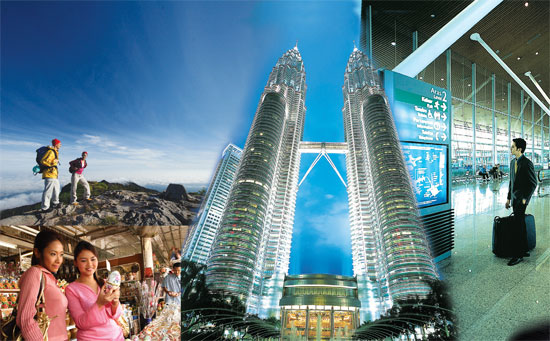
by StudyMalaysia.com on July 6, 2015 | Why Study in Malaysia

Introduction
Now that you have completed (or are about to complete) your secondary schooling, you probably want to know what higher education options there are out there. The process of deciding on the right higher education options can be full of overwhelming decisions. Along with what to study, you will need to consider which country and institution to choose, and think about the type of qualification you would like to acquire.
Now that you have completed (or are about to complete) your secondary schooling, you probably want to know what higher education options there are out there. The process of deciding on the right higher education options can be full of overwhelming decisions. Along with what to study, you will need to consider which country and institution to choose, and think about the type of qualification you would like to acquire.
Why Choose Malaysia?
Studying abroad doesn't have to be just a dream anymore. Malaysia welcomes all international students from primary to tertiary levels, offering quality education that is more affordable than you may have thought. Besides home-grown schools and universities, Malaysia has world renowned international schools and universities setting up branch campuses in the country to provide world-class education opportunities to bot Malaysian and international students.
The Malaysian government has placed every effort in ensuring that the quality of education in Malaysia, offered both by higher educational institutions and international schools, are of global standards. Our well structured higher education system offers you the opportunity to pursue an international qualification that is recognised, reputable and affordable.
 In addition, the multicultural community of Malaysia supports the institutions' aim to make its students global citizens. International students are exposed to multiple languages, cultures and traditions as well as a wide variety of culinary treats and places of interest to explore. There are not many countries in this world can offer the type of learning environment that Malaysia offers to international students.
Malaysia is ranked the world's 11th most preferred education destination in the world among international students by UNESCO. This shows that Malaysia has definitely won the confidence of international students for its quality education and enriching student experience. Here are some key reasons why you should choose Malaysia when deciding to study abroad.
In addition, the multicultural community of Malaysia supports the institutions' aim to make its students global citizens. International students are exposed to multiple languages, cultures and traditions as well as a wide variety of culinary treats and places of interest to explore. There are not many countries in this world can offer the type of learning environment that Malaysia offers to international students.
Malaysia is ranked the world's 11th most preferred education destination in the world among international students by UNESCO. This shows that Malaysia has definitely won the confidence of international students for its quality education and enriching student experience. Here are some key reasons why you should choose Malaysia when deciding to study abroad.
- Malaysia offers a wide range of internationally recognised qualifications such as:
- Home-grown international qualifications - international standards, affordable fees
- "2+1" twinning degree programmes - a value-for-money "cross-border" experience
- "3+0" foreign bachelor's degree in Malaysia - an affordable international qualification
- Foreign university branch campuses in Malaysia - get the best of the east and west
- Low cost of living and affordable tuition fees
opening opportunities to study abroad to more students
- Simple visa and student pass application process
- Malaysia's advantage:
- A multi-ethnic population - living and learning in harmony
- Safe, stable and peace of mind
- Vibrant and open economy
- Quality education - assured by legislation
- A food haven - your gastronomic adventure begins here
- Friendly and hospitable Malaysians of whom many can speak English
Another reason why Malaysia is an excellent choice as a study destination is that it has had years of experience with international students.
For those who wish to know more about what study opportunities Malaysia has to offer, please visit our Course Search Function.
Studying abroad doesn't have to be just a dream anymore. Malaysia welcomes all international students from primary to tertiary levels, offering quality education that is more affordable than you may have thought. Besides home-grown schools and universities, Malaysia has world renowned international schools and universities setting up branch campuses in the country to provide world-class education opportunities to bot Malaysian and international students.
The Malaysian government has placed every effort in ensuring that the quality of education in Malaysia, offered both by higher educational institutions and international schools, are of global standards. Our well structured higher education system offers you the opportunity to pursue an international qualification that is recognised, reputable and affordable.

In addition, the multicultural community of Malaysia supports the institutions' aim to make its students global citizens. International students are exposed to multiple languages, cultures and traditions as well as a wide variety of culinary treats and places of interest to explore. There are not many countries in this world can offer the type of learning environment that Malaysia offers to international students.
Malaysia is ranked the world's 11th most preferred education destination in the world among international students by UNESCO. This shows that Malaysia has definitely won the confidence of international students for its quality education and enriching student experience. Here are some key reasons why you should choose Malaysia when deciding to study abroad.
- Malaysia offers a wide range of internationally recognised qualifications such as:
- Home-grown international qualifications - international standards, affordable fees
- "2+1" twinning degree programmes - a value-for-money "cross-border" experience
- "3+0" foreign bachelor's degree in Malaysia - an affordable international qualification
- Foreign university branch campuses in Malaysia - get the best of the east and west
- Low cost of living and affordable tuition fees
opening opportunities to study abroad to more students - Simple visa and student pass application process
- Malaysia's advantage:
- A multi-ethnic population - living and learning in harmony
- Safe, stable and peace of mind
- Vibrant and open economy
- Quality education - assured by legislation
- A food haven - your gastronomic adventure begins here
- Friendly and hospitable Malaysians of whom many can speak English
Another reason why Malaysia is an excellent choice as a study destination is that it has had years of experience with international students.
For those who wish to know more about what study opportunities Malaysia has to offer, please visit our Course Search Function.
Academic Qualifications in Malaysia
For those of you who have chosen to come to Malaysia to study and have decided on your career choice, figuring out your next step in education could be quite easy.
Once you have narrowed down your options for a particular subject, field of study or type of programme in Malaysia, check the website of institutions that offer this programme to get a better picture of the course structure. A good list of information to find out would be the required entry qualifications, study duration, modules offered, methods of study (e.g. lectures, workshops, work placements, projects, etc.) and study mode, i.e. part-time or full-time study, or even distance learning.
In the following section, we will examine the different qualifications available to international students like you in Malaysia.
For those of you who have chosen to come to Malaysia to study and have decided on your career choice, figuring out your next step in education could be quite easy.
Once you have narrowed down your options for a particular subject, field of study or type of programme in Malaysia, check the website of institutions that offer this programme to get a better picture of the course structure. A good list of information to find out would be the required entry qualifications, study duration, modules offered, methods of study (e.g. lectures, workshops, work placements, projects, etc.) and study mode, i.e. part-time or full-time study, or even distance learning.
In the following section, we will examine the different qualifications available to international students like you in Malaysia.
A. Pre-university Qualifications for school leavers with O-level qualifications
At pre-university level, students who have completed 11 years of education (e.g. O-level) can continue with pre-university studies such as GCE A-levels, IB Diploma, or Australian Matriculation, just to name a few, which are offered by many private higher educational institutions (HEIs). A pre-university qualification is the basic entry requirement for a bachelor degree at HEIs and takes about 12-18 months to complete.
At pre-university level, students who have completed 11 years of education (e.g. O-level) can continue with pre-university studies such as GCE A-levels, IB Diploma, or Australian Matriculation, just to name a few, which are offered by many private higher educational institutions (HEIs). A pre-university qualification is the basic entry requirement for a bachelor degree at HEIs and takes about 12-18 months to complete.
B. Academic Qualifications at Higher Education Level
Higher education includes qualifications at certificate, diploma, undergraduate as well as postgraduate levels. The providers of higher education are colleges, polytechnics and universities. Undergraduate studies consist of bachelor degree programmes and professional studies while postgraduate studies consist of master and doctoral degrees.
B1. Bachelor Degree Qualifications - for school leavers with A-levels or its equivalent qualifications
 Malaysia offers many options of bachelor degree programmes that are affordable and reputable. Higher educational institutions, especially private higher educational institutions (PHEIs), provide a wide spectrum of quality study options for students at bachelor degree level. Among some of these options include:
Acquiring foreign degree qualifications via:
Malaysia offers many options of bachelor degree programmes that are affordable and reputable. Higher educational institutions, especially private higher educational institutions (PHEIs), provide a wide spectrum of quality study options for students at bachelor degree level. Among some of these options include:
Acquiring foreign degree qualifications via:
- Courses offered by foreign university branch campuses located in Malaysia that lead to the award of these universities' degree qualifications
- Courses conducted by Malaysian home-grown private higher educational institutions that lead to foreign degree qualifications. Examples include:
- Private colleges/universities that offer twinning degree programmes (such as 2+1 and 3+0 arrangements) that lead to foreign degree qualifications awarded by universities from various countries
- Private colleges/private universities that offer credit transfer programmes (such as American degree programme, UK/Australia credit transfer programmes) that lead to foreign degree qualifications awarded by universities from various countries
- Private colleges/ private universities that offer diplomas with 'advanced standing' status recognised by foreign universities for their bachelor's degree programmes
- Private colleges that offer external degree programmes that lead to the award of a bachelor's degree from foreign universities
- Private universities that offer home-grown bachelor degree with 'advanced standing' status recognised by foreign universities for ther bachelor degree programmes
Acquiring Malaysian degree qualifications via:
- Malaysian home-grown private universities and university colleges that offer home-grown degree qualifications
- Joint degree qualifications and dual-award degree certification offered by universities that collaborate with partner foreign universities (students graduate with two degrees, one each from both universities).
Collectively, PHEIs in Malaysia offer you many choices that suit your interest, budget, academic needs and career aspiraion. Students also can acquire the qualification from Malaysian public universities but seats are limited.
B2. Qualifications via Transnational Education (An international pathway that leads to the acquisition of a foreign bachelor degree qualification)
Malaysia is a pioneer in this region in the development and promotion of transnational bachelor degree programmes. Since the early 1980s, Malaysia has collaborated with reputable universities from countries like the UK, the US, New Zealand and Australia. Transnational education allows students to have the experience of studying in two countries in their pursuit of a bachelor degree qualification. This split-degree arrangement has enabled many students to acquire qualifications in countries like the UK, Australia and the US at significantly lower costs.
This unique international pathway that leads to the acquisition of a foreign bachelor degree qualificatin is offered at several PHEIs. They include '2+1' twinning degrees, Australian degree transfer programmes, UK degree transfer programmes, and American degree transfer programmes.
B3. Foreign Degree Qualification via Degree Pathway
Many Malaysian private university degree programmes (Year 1 and Year 2 curriculum) are recognised by partner universities overseas with 'advanced standing' entry status. As such, students who have completed Year 1 or Year 2 of a degree programme in PHEIs can be accepted as second or final year students of the degree programmes of respective partner universities overseas. This arrangement allows students the option of graduating with a foreign degree qualification abroad.
B4. Postgraduate Studies
If you are thinking of furthering your education at graduate level abroad, Malaysia's postgraduate studies can be a worthwhile investment and wonderful experience.
The quality of the programmes conducted is assured by the national quality assurance agency, namely, the Malaysian Qualifications Agency (MQA), which was established under the Malaysian Qualifications Agency Act 2007.
Postgraduate courses in Malaysia are unique and varied in discipline. Besides Malaysian qualifications, postgraduate qualifications from countries such as the UK and Australia are also offered here.
B5. Certificate and Diploma Qualifications
Higher education at certificate and diploma levels is mainly for students with IGCSE or O-level qualifications. A certificate usually takes a year to complete while a diploma qualification takes 2 to 2.5 years.
For a list of certificate and diploma programmes, please refer to the our course search function.
Higher education includes qualifications at certificate, diploma, undergraduate as well as postgraduate levels. The providers of higher education are colleges, polytechnics and universities. Undergraduate studies consist of bachelor degree programmes and professional studies while postgraduate studies consist of master and doctoral degrees.
B1. Bachelor Degree Qualifications - for school leavers with A-levels or its equivalent qualifications

Malaysia offers many options of bachelor degree programmes that are affordable and reputable. Higher educational institutions, especially private higher educational institutions (PHEIs), provide a wide spectrum of quality study options for students at bachelor degree level. Among some of these options include:
Acquiring foreign degree qualifications via:
- Courses offered by foreign university branch campuses located in Malaysia that lead to the award of these universities' degree qualifications
- Courses conducted by Malaysian home-grown private higher educational institutions that lead to foreign degree qualifications. Examples include:
- Private colleges/universities that offer twinning degree programmes (such as 2+1 and 3+0 arrangements) that lead to foreign degree qualifications awarded by universities from various countries
- Private colleges/private universities that offer credit transfer programmes (such as American degree programme, UK/Australia credit transfer programmes) that lead to foreign degree qualifications awarded by universities from various countries
- Private colleges/ private universities that offer diplomas with 'advanced standing' status recognised by foreign universities for their bachelor's degree programmes
- Private colleges that offer external degree programmes that lead to the award of a bachelor's degree from foreign universities
- Private universities that offer home-grown bachelor degree with 'advanced standing' status recognised by foreign universities for ther bachelor degree programmes
Acquiring Malaysian degree qualifications via:
- Malaysian home-grown private universities and university colleges that offer home-grown degree qualifications
- Joint degree qualifications and dual-award degree certification offered by universities that collaborate with partner foreign universities (students graduate with two degrees, one each from both universities).
Collectively, PHEIs in Malaysia offer you many choices that suit your interest, budget, academic needs and career aspiraion. Students also can acquire the qualification from Malaysian public universities but seats are limited.
B2. Qualifications via Transnational Education (An international pathway that leads to the acquisition of a foreign bachelor degree qualification)
Malaysia is a pioneer in this region in the development and promotion of transnational bachelor degree programmes. Since the early 1980s, Malaysia has collaborated with reputable universities from countries like the UK, the US, New Zealand and Australia. Transnational education allows students to have the experience of studying in two countries in their pursuit of a bachelor degree qualification. This split-degree arrangement has enabled many students to acquire qualifications in countries like the UK, Australia and the US at significantly lower costs.
This unique international pathway that leads to the acquisition of a foreign bachelor degree qualificatin is offered at several PHEIs. They include '2+1' twinning degrees, Australian degree transfer programmes, UK degree transfer programmes, and American degree transfer programmes.
B3. Foreign Degree Qualification via Degree Pathway
Many Malaysian private university degree programmes (Year 1 and Year 2 curriculum) are recognised by partner universities overseas with 'advanced standing' entry status. As such, students who have completed Year 1 or Year 2 of a degree programme in PHEIs can be accepted as second or final year students of the degree programmes of respective partner universities overseas. This arrangement allows students the option of graduating with a foreign degree qualification abroad.
B4. Postgraduate Studies
If you are thinking of furthering your education at graduate level abroad, Malaysia's postgraduate studies can be a worthwhile investment and wonderful experience.
The quality of the programmes conducted is assured by the national quality assurance agency, namely, the Malaysian Qualifications Agency (MQA), which was established under the Malaysian Qualifications Agency Act 2007.
Postgraduate courses in Malaysia are unique and varied in discipline. Besides Malaysian qualifications, postgraduate qualifications from countries such as the UK and Australia are also offered here.
B5. Certificate and Diploma Qualifications
Higher education at certificate and diploma levels is mainly for students with IGCSE or O-level qualifications. A certificate usually takes a year to complete while a diploma qualification takes 2 to 2.5 years.
For a list of certificate and diploma programmes, please refer to the our course search function.
C. Levels of Educations and Entry Requirements
The general entry requirements and duration of study at certificate, diploma, undergraduate and postgraduate levels (academic) can be grouped as below:
Table 10.1: Higher Education Qualification Levels, Its Entry Requirements and Duration of Study
Academic Qualification Level Type of Students Estimated Age Group Duration of Study Certificate level For students with
secondary school
qualifications such as
O-levels 17 and above 1 to 1.5 years Diploma level
For students with
secondary school
qualifications such as
O-levels
17 and above 2 to 2.5 years Bachelor's degree
level For students with pre-
university qualifications
such as GCE A-levels, IB
diploma, etc. 19 and above 3 to 5 years Master's degree For students with a
bachelor's degree Any adult 1 to 3 years PhD (Doctor of
Philosophy) For students with a
master's degree Any adult 3 to 5 years
Source: StudyMalaysia Research Team
The qualifications awarded by all HEIs (both public and private) in Malaysia are registered under laws related to Malaysian education and are governed by the Malaysian Qualifications Framework (MQF). The framework specifies that a programme is required to achieve a minimum number of credits before an academic qualification can be awarded, e.g. certificate (60 credits), diploma (90 credits), bachelor degree (120 credits) and taught master degree (40 credits). Master and doctoral degrees obtained by research do not have credit values (see Table 10.2).
Table 10.2: Malaysian Higher Education Qualifications, Levels and Minimum Number of Credits
Education levels Higher education
qualification Minimum credit required for
the award of qualification 8 Doctoral No given credit value 7 Research master degree No given credit value 7 Fully or partly taught master
degree 40 7 Postgraduate diploma 30 7 Postgraduate certificate 20 6 Bachelor degree 120 6 Graduate diploma 60 6 Graduate certificate 30 5 Advanced diploma 40 4 Diploma 90 3 Certificate 60 1-3 Skills certificate According to the skill and levels
Source: Malaysian Qualifications Agency
The general entry requirements and duration of study at certificate, diploma, undergraduate and postgraduate levels (academic) can be grouped as below:
Table 10.1: Higher Education Qualification Levels, Its Entry Requirements and Duration of Study
| Academic Qualification Level | Type of Students | Estimated Age Group | Duration of Study |
|---|---|---|---|
| Certificate level | For students with secondary school qualifications such as O-levels | 17 and above | 1 to 1.5 years |
| Diploma level |
For students with
secondary school qualifications such as O-levels | 17 and above | 2 to 2.5 years |
| Bachelor's degree level | For students with pre- university qualifications such as GCE A-levels, IB diploma, etc. | 19 and above | 3 to 5 years |
| Master's degree | For students with a bachelor's degree | Any adult | 1 to 3 years |
| PhD (Doctor of Philosophy) | For students with a master's degree | Any adult | 3 to 5 years |
Source: StudyMalaysia Research Team
The qualifications awarded by all HEIs (both public and private) in Malaysia are registered under laws related to Malaysian education and are governed by the Malaysian Qualifications Framework (MQF). The framework specifies that a programme is required to achieve a minimum number of credits before an academic qualification can be awarded, e.g. certificate (60 credits), diploma (90 credits), bachelor degree (120 credits) and taught master degree (40 credits). Master and doctoral degrees obtained by research do not have credit values (see Table 10.2).
Table 10.2: Malaysian Higher Education Qualifications, Levels and Minimum Number of Credits
| Education levels | Higher education qualification | Minimum credit required for the award of qualification |
|---|---|---|
| 8 | Doctoral | No given credit value |
| 7 | Research master degree | No given credit value |
| 7 | Fully or partly taught master degree | 40 |
| 7 | Postgraduate diploma | 30 |
| 7 | Postgraduate certificate | 20 |
| 6 | Bachelor degree | 120 |
| 6 | Graduate diploma | 60 |
| 6 | Graduate certificate | 30 |
| 5 | Advanced diploma | 40 |
| 4 | Diploma | 90 |
| 3 | Certificate | 60 |
| 1-3 | Skills certificate | According to the skill and levels |
Source: Malaysian Qualifications Agency
D. Types of Higher Education Providers in Malaysia
Once you have a short list of the courses you would like to study, the next thing to do is look at the universities or colleges that offer them.
 Before you decide, let us take a closer look at the types of HEIs in Malaysia. You may be surprised at what you thought you knew (or didn't).
Higher education providers in Malaysia can be grouped into two major categories, viz. public HEIs (government funded), and private HEIs.
In Malaysia, higher education in the academic and professional fields is provided by:
Before you decide, let us take a closer look at the types of HEIs in Malaysia. You may be surprised at what you thought you knew (or didn't).
Higher education providers in Malaysia can be grouped into two major categories, viz. public HEIs (government funded), and private HEIs.
In Malaysia, higher education in the academic and professional fields is provided by:
- Public-funded HEIs which include public universities and public colleges; and
- Privately-funded HEIs which include private universities, private colleges and foreign university branch campuses.
The Ministry of Education (MOE) is directly responsible for the operation and performance of public HEIs, whereas private HEIs are guided by MOE's policy guidelines and objectives.
D1. Public Higher Educational Institutions
Public HEIs consist of universities, polytechnics, community colleges and colleges. There are 20 public universities, 32 polytechnics and 72 community colleges. In addition, there are 27 teacher education institues which prepare candidates to become teachers at primary and secondary schools in Malaysia.
Public universities offer bachelor degrees and postgraduate programmes, with some offering programmes at diploma level and university foundation programmes. Polytechnics and community colleges offer certificate and diploma level programmes.
D2. Private Higher Educational Institutions
Private HEIs come under the jurisdiction of MOE and comprise universities, university-colleges and foreign university branch campuses which award their own degree qualifications (at bachelor degree and postgraduate levels), diploma programmes and foundation studies. In contrast, private colleges award their own qualifications at diploma and certificate levels, and offer 3+0 degrees, split-degrees, tutorial support for professional qualifications, and franchised postgraduate programmes from foreign universities.
At the beginning of 2014, there were 40 private universities, 24 private university-colleges and about 427 active private colleges in Malaysia. In addition, there are currently eight foreign university branch campuses in the country. Students who wish to obtain a degree from a foreign university have the option of enrolliing at a branch campus of these foreign universities in Malaysia. Students can also choose to pursue a 3+0 degree programme which allows them to complete a degree entirely in one of Malaysia's many private colleges and still earn a foreign university degree qualification.
By now your list should be a concise one, ideally narrowed down to four or five programmes you would like to apply for. There is no time to lose. Unless you plan on taking some time off before you start the next chapter of your life, it is time to start creacking on all those applications.
The most important thing you need to ensure before applying is that your qualifications meet the minimum requirement for a particular programme. Every programme or HEI will have requirements that differ slightly - nonetheless, Table 10.3 shows the general requirements for pre-university studies, certificate, diploma and a bachelor degree programmes at private HEIs in Malaysia.
Table 10.3: General Entry Requirements for Pre-University, Certificate, Diploma and Degree Programmes at Private HEIs
Education Level General Entry Requirements University foundation programme O Level with 5 credits, or its equivalent Certificate O Level with 1 credit, or its equivalent Diploma O Level with minimum 3 credits, or its equivalent Year 1 bachelor degree GCE A-Levels+English Proficiency or its equivalent
Once you have a short list of the courses you would like to study, the next thing to do is look at the universities or colleges that offer them.

Before you decide, let us take a closer look at the types of HEIs in Malaysia. You may be surprised at what you thought you knew (or didn't).
Higher education providers in Malaysia can be grouped into two major categories, viz. public HEIs (government funded), and private HEIs.
In Malaysia, higher education in the academic and professional fields is provided by:
- Public-funded HEIs which include public universities and public colleges; and
- Privately-funded HEIs which include private universities, private colleges and foreign university branch campuses.
The Ministry of Education (MOE) is directly responsible for the operation and performance of public HEIs, whereas private HEIs are guided by MOE's policy guidelines and objectives.
D1. Public Higher Educational Institutions
Public HEIs consist of universities, polytechnics, community colleges and colleges. There are 20 public universities, 32 polytechnics and 72 community colleges. In addition, there are 27 teacher education institues which prepare candidates to become teachers at primary and secondary schools in Malaysia.
Public universities offer bachelor degrees and postgraduate programmes, with some offering programmes at diploma level and university foundation programmes. Polytechnics and community colleges offer certificate and diploma level programmes.
D2. Private Higher Educational Institutions
Private HEIs come under the jurisdiction of MOE and comprise universities, university-colleges and foreign university branch campuses which award their own degree qualifications (at bachelor degree and postgraduate levels), diploma programmes and foundation studies. In contrast, private colleges award their own qualifications at diploma and certificate levels, and offer 3+0 degrees, split-degrees, tutorial support for professional qualifications, and franchised postgraduate programmes from foreign universities.
At the beginning of 2014, there were 40 private universities, 24 private university-colleges and about 427 active private colleges in Malaysia. In addition, there are currently eight foreign university branch campuses in the country. Students who wish to obtain a degree from a foreign university have the option of enrolliing at a branch campus of these foreign universities in Malaysia. Students can also choose to pursue a 3+0 degree programme which allows them to complete a degree entirely in one of Malaysia's many private colleges and still earn a foreign university degree qualification.
By now your list should be a concise one, ideally narrowed down to four or five programmes you would like to apply for. There is no time to lose. Unless you plan on taking some time off before you start the next chapter of your life, it is time to start creacking on all those applications.
The most important thing you need to ensure before applying is that your qualifications meet the minimum requirement for a particular programme. Every programme or HEI will have requirements that differ slightly - nonetheless, Table 10.3 shows the general requirements for pre-university studies, certificate, diploma and a bachelor degree programmes at private HEIs in Malaysia.
Table 10.3: General Entry Requirements for Pre-University, Certificate, Diploma and Degree Programmes at Private HEIs
| Education Level | General Entry Requirements |
|---|---|
| University foundation programme | O Level with 5 credits, or its equivalent |
| Certificate | O Level with 1 credit, or its equivalent |
| Diploma | O Level with minimum 3 credits, or its equivalent |
| Year 1 bachelor degree | GCE A-Levels+English Proficiency or its equivalent |
Applying to Study in Malaysia
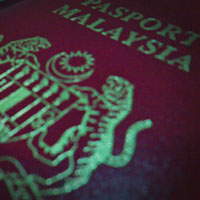 As an international student, you can apply DIRECTLY to the educational institution of your choice. You are advised to apply only to institutions that have been given the approval by the relevant authorities to accept international students.
For courses at public universities - bachelor degree and postgraduate programmes - international students have to apply directly to the university of their choice for full-time mode programmes only.
For courses at private higher educational institutions e.g. pre-university studies, diploma, bachelor degree and postgraduate studies, students have to apply directly to the institution of their choice, which must have the approval of the Ministry of Home Affairs Malaysia to enrol international students. International students are only allowed to study for full-time programmes.
To facilitate the entry of international students coming to study in Malaysia, the government has set up a one-stop agency known as Education Malaysia Global Services to assist in expediting the issuance of a Student Pass to international students as well as preparation of I-Card for international students, and to provide other services that ease their transition to live in this country.
As an international student, you can apply DIRECTLY to the educational institution of your choice. You are advised to apply only to institutions that have been given the approval by the relevant authorities to accept international students.
For courses at public universities - bachelor degree and postgraduate programmes - international students have to apply directly to the university of their choice for full-time mode programmes only.
For courses at private higher educational institutions e.g. pre-university studies, diploma, bachelor degree and postgraduate studies, students have to apply directly to the institution of their choice, which must have the approval of the Ministry of Home Affairs Malaysia to enrol international students. International students are only allowed to study for full-time programmes.
To facilitate the entry of international students coming to study in Malaysia, the government has set up a one-stop agency known as Education Malaysia Global Services to assist in expediting the issuance of a Student Pass to international students as well as preparation of I-Card for international students, and to provide other services that ease their transition to live in this country.
 As an international student, you can apply DIRECTLY to the educational institution of your choice. You are advised to apply only to institutions that have been given the approval by the relevant authorities to accept international students.
As an international student, you can apply DIRECTLY to the educational institution of your choice. You are advised to apply only to institutions that have been given the approval by the relevant authorities to accept international students.
For courses at public universities - bachelor degree and postgraduate programmes - international students have to apply directly to the university of their choice for full-time mode programmes only.
For courses at private higher educational institutions e.g. pre-university studies, diploma, bachelor degree and postgraduate studies, students have to apply directly to the institution of their choice, which must have the approval of the Ministry of Home Affairs Malaysia to enrol international students. International students are only allowed to study for full-time programmes.
To facilitate the entry of international students coming to study in Malaysia, the government has set up a one-stop agency known as Education Malaysia Global Services to assist in expediting the issuance of a Student Pass to international students as well as preparation of I-Card for international students, and to provide other services that ease their transition to live in this country.
Conclusion
With more than three decades of experience in providing educaiton to international students, Malaysia has now become a regional education hub offering world-class education. Our well structured higher education system offers student like you the opportunity to pursue an international qualification that is reputable and affordable.
With more than three decades of experience in providing educaiton to international students, Malaysia has now become a regional education hub offering world-class education. Our well structured higher education system offers student like you the opportunity to pursue an international qualification that is reputable and affordable.
Malaysia - Facts At A Glance
by StudyMalaysia.com on February 21, 2015 | Why Study in Malaysia
Official Name The Federation of Malaysia Malaysia's Land Area Malaysia consists of two areas of mainland, separated by the South China Sea, namely West Malaysia (or more popularly known as Peninsular Malaysia) and East Malaysia. The country has a total land area of 329,758 square km made up of 13 states and three Federal Territories of Kuala Lumpur (the capital), Putrajaya and Labuan. Location Malaysia is situated in South-eastern Asia, between 2 and 7 degrees north of the Equator. To the north of Peninsular Malaysia is Thailand while to the south is Singapore. Government  Malaysia practises a system of government based on parliamentary democracy with a constitutional monarchy at the federal and state levels. At the federal level, the Yang Di-Pertuan Agong is the head of the state and the federal government is governed by the Prime Minister and his cabinet of ministers who report to the Parliament which comprises two houses, namely a house of Representatives and a Senate. At the State level, the head (Ruler) of state is either the Sultan, Raja or Yang Di-Pertua Besar, while Yang Di-Pertua Negeri is the head of the state where there is no ruler.
Malaysia practises a system of government based on parliamentary democracy with a constitutional monarchy at the federal and state levels. At the federal level, the Yang Di-Pertuan Agong is the head of the state and the federal government is governed by the Prime Minister and his cabinet of ministers who report to the Parliament which comprises two houses, namely a house of Representatives and a Senate. At the State level, the head (Ruler) of state is either the Sultan, Raja or Yang Di-Pertua Besar, while Yang Di-Pertua Negeri is the head of the state where there is no ruler.
In keeping with the concept of Parliamentary Democracy which forms the basis of the government administration in Malaysia, the Federal Constitution (the supreme law of the nation) underlines the distribution of governing powers among the Executive, Judicial and Legislative Authorities. The Executive branch is headed by the Prime Minister, Honourable Dato' Sri Mohd. Najib bin Tun Haji Abdul Razak.
Parliamentary general elections are held every five years to elect the members of Parliament or the people's representatives.Supreme Head of State In this system of constitutional monarchy The Yang di-Pertuan Agong is the King or Supreme Head of State as provided by the Constitution. The King performs his official duties with the advice of the Prime Minister and his Cabinet as provided for by the Constitution. His Majesty also holds the position of the Islamic Religious Head for the States of Penang, Malacca,Sabah, Sarawak, and the Federal Territories. As Malaysia's Supreme Head of State, the King is also the Supreme Commander of the Malaysian Armed Forces.
His Majesty, The Yang di-Pertuan Agong, is elected out of nine hereditary rulers (or Sultans) every five years by the Conference of Rulers. Malaysia is the only country in the world to have a rotating system of Kings. Independence 31st August 1957 Population Estimated 28.3 million (in 2010) Capital Kuala Lumpur People Dubbed as "Mini Asia", Malaysia is a multi-racial and multi-ethnic country where the majorities are the Malays, Chinese and Indian. In addition, there are some 29 ethnic groups including the majority groups of Dayaks (in Sarawak) and Kadazans (in Sabah).
(It is estimated that 66.2% of the population are made up of Malays, Malay related and aboriginal people; 25.1% are Chinese; while Indians make up 7.4% and another 1.3% comprises other races). Language Bahasa Melayu is the national language, although English is widely used and spoken. The Mandarin language and Chinese dialects, particularly Cantonese and Hokkien, as well as Indian dialects like Tamil and Hindi are common among the Chinese and Indian communities respectively. Religion Islam is the official religion of the nation. However, the Malaysian Constitution guarantees freedom of worship and as such, Christianity, Hinduism and Buddhism make up the other primary religions embraced by the Malaysian society. Currency & Exchange Rate All transactions in Malaysia are carried out using the official Malaysian currency of Ringgit (RM), which is in the form of notes, in the denominations of RM1, RM2, RM5, RM10, RM50 and RM100, and Sen, which is in the form of coins that include 1 sen, 5 sen, 10 sen, 20 sen and 50 sen. As at 4th January 2011, the exchange rate is US$1 = RM3.06 and all major currencies can be exchanged for the Ringgit. Country Code +60 Time Difference The standard Malaysian time is 8 hours ahead of the Greenwich Mean Time (GMT) time and 16 hours ahead of the United State Pacific Standard time. Climate Malaysia has a pleasant tropical climate and is generally warm all the year round with temperatures ranging from 21°C to 32°C. The general weather is humid with annual rainfall varying from 2,000mm to 2,500mm. Natural Resources Tin, petroleum, timber, copper, iron ore, natural gas, bauxite.
by StudyMalaysia.com on February 21, 2015 | Why Study in Malaysia
| Official Name | The Federation of Malaysia |
| Malaysia's Land Area | Malaysia consists of two areas of mainland, separated by the South China Sea, namely West Malaysia (or more popularly known as Peninsular Malaysia) and East Malaysia. The country has a total land area of 329,758 square km made up of 13 states and three Federal Territories of Kuala Lumpur (the capital), Putrajaya and Labuan. |
| Location | Malaysia is situated in South-eastern Asia, between 2 and 7 degrees north of the Equator. To the north of Peninsular Malaysia is Thailand while to the south is Singapore. |
| Government |  Malaysia practises a system of government based on parliamentary democracy with a constitutional monarchy at the federal and state levels. At the federal level, the Yang Di-Pertuan Agong is the head of the state and the federal government is governed by the Prime Minister and his cabinet of ministers who report to the Parliament which comprises two houses, namely a house of Representatives and a Senate. At the State level, the head (Ruler) of state is either the Sultan, Raja or Yang Di-Pertua Besar, while Yang Di-Pertua Negeri is the head of the state where there is no ruler. Malaysia practises a system of government based on parliamentary democracy with a constitutional monarchy at the federal and state levels. At the federal level, the Yang Di-Pertuan Agong is the head of the state and the federal government is governed by the Prime Minister and his cabinet of ministers who report to the Parliament which comprises two houses, namely a house of Representatives and a Senate. At the State level, the head (Ruler) of state is either the Sultan, Raja or Yang Di-Pertua Besar, while Yang Di-Pertua Negeri is the head of the state where there is no ruler.In keeping with the concept of Parliamentary Democracy which forms the basis of the government administration in Malaysia, the Federal Constitution (the supreme law of the nation) underlines the distribution of governing powers among the Executive, Judicial and Legislative Authorities. The Executive branch is headed by the Prime Minister, Honourable Dato' Sri Mohd. Najib bin Tun Haji Abdul Razak. Parliamentary general elections are held every five years to elect the members of Parliament or the people's representatives. |
| Supreme Head of State | In this system of constitutional monarchy The Yang di-Pertuan Agong is the King or Supreme Head of State as provided by the Constitution. The King performs his official duties with the advice of the Prime Minister and his Cabinet as provided for by the Constitution. His Majesty also holds the position of the Islamic Religious Head for the States of Penang, Malacca,Sabah, Sarawak, and the Federal Territories. As Malaysia's Supreme Head of State, the King is also the Supreme Commander of the Malaysian Armed Forces. His Majesty, The Yang di-Pertuan Agong, is elected out of nine hereditary rulers (or Sultans) every five years by the Conference of Rulers. Malaysia is the only country in the world to have a rotating system of Kings. |
| Independence | 31st August 1957 |
| Population | Estimated 28.3 million (in 2010) |
| Capital | Kuala Lumpur |
| People | Dubbed as "Mini Asia", Malaysia is a multi-racial and multi-ethnic country where the majorities are the Malays, Chinese and Indian. In addition, there are some 29 ethnic groups including the majority groups of Dayaks (in Sarawak) and Kadazans (in Sabah). (It is estimated that 66.2% of the population are made up of Malays, Malay related and aboriginal people; 25.1% are Chinese; while Indians make up 7.4% and another 1.3% comprises other races). |
| Language | Bahasa Melayu is the national language, although English is widely used and spoken. The Mandarin language and Chinese dialects, particularly Cantonese and Hokkien, as well as Indian dialects like Tamil and Hindi are common among the Chinese and Indian communities respectively. |
| Religion | Islam is the official religion of the nation. However, the Malaysian Constitution guarantees freedom of worship and as such, Christianity, Hinduism and Buddhism make up the other primary religions embraced by the Malaysian society. |
| Currency & Exchange Rate | All transactions in Malaysia are carried out using the official Malaysian currency of Ringgit (RM), which is in the form of notes, in the denominations of RM1, RM2, RM5, RM10, RM50 and RM100, and Sen, which is in the form of coins that include 1 sen, 5 sen, 10 sen, 20 sen and 50 sen. As at 4th January 2011, the exchange rate is US$1 = RM3.06 and all major currencies can be exchanged for the Ringgit. |
| Country Code | +60 |
| Time Difference | The standard Malaysian time is 8 hours ahead of the Greenwich Mean Time (GMT) time and 16 hours ahead of the United State Pacific Standard time. |
| Climate | Malaysia has a pleasant tropical climate and is generally warm all the year round with temperatures ranging from 21°C to 32°C. The general weather is humid with annual rainfall varying from 2,000mm to 2,500mm. |
| Natural Resources | Tin, petroleum, timber, copper, iron ore, natural gas, bauxite. |
Introducing Malaysia's Success
Malaysia is a harmonious and peaceful country where various ethnic groups live together through mutual understanding and tolerance fostered over several decades of coexistence. The cultures of these groups form a colourful and vibrant heritage for the peoples of Malaysia as well as its visitors.
Since Malaysia gained independence in 1957, it has evolved into a high technology nation and experienced steady economic progression and rapid infrastructure development which Malaysians are truly proud of.
Today, Malaysia continues to thrive in its ventures. It has become more efficient and competitive globally. According to the 2010 World Competitive Yearbook published by the Swiss-based Institute for Management Development (IMD), Malaysia had an overall ranking of 10th most competitive countries in the world. IMD's World Competitiveness Yearbook reports on the competitiveness of nations through the Overall Competitiveness Scoreboard which ranks the world's 57 leading economic nations. It takes into consideration a economic performance, government efficiency, business efficiency and infrastructure.
Malaysia is also a popular destination for tourists. Lonely Planet, one of the most widely read travel guidebook, picked Malaysia as one of the world's top destination for 2010. The Lonely Planet praises Malaysia for its diversity from its cities to the rainforests as well as multicultural elements of its people.
"Malaysia is known to many as a peaceful country where various ethnic groups live harmoniously"
Malaysia is a harmonious and peaceful country where various ethnic groups live together through mutual understanding and tolerance fostered over several decades of coexistence. The cultures of these groups form a colourful and vibrant heritage for the peoples of Malaysia as well as its visitors.
Since Malaysia gained independence in 1957, it has evolved into a high technology nation and experienced steady economic progression and rapid infrastructure development which Malaysians are truly proud of.
Today, Malaysia continues to thrive in its ventures. It has become more efficient and competitive globally. According to the 2010 World Competitive Yearbook published by the Swiss-based Institute for Management Development (IMD), Malaysia had an overall ranking of 10th most competitive countries in the world. IMD's World Competitiveness Yearbook reports on the competitiveness of nations through the Overall Competitiveness Scoreboard which ranks the world's 57 leading economic nations. It takes into consideration a economic performance, government efficiency, business efficiency and infrastructure.
Malaysia is also a popular destination for tourists. Lonely Planet, one of the most widely read travel guidebook, picked Malaysia as one of the world's top destination for 2010. The Lonely Planet praises Malaysia for its diversity from its cities to the rainforests as well as multicultural elements of its people.
"Malaysia is known to many as a peaceful country where various ethnic groups live harmoniously"
Malaysian Plan for Developed Country Status
The 10th Malaysia Plan (10MP) covers the period from 2011 to 2015 and is part of the government's goal of becoming a developed nation by 2020. Among the highlights of the 10MP are new approaches towards becoming a high income and high productivity economy. The gross national income per capita is targeted to increase from the current RM23,567 or USD7,365, (in 2009) to RM38,850 or USD12,140, in 2015.
Twelve National Key Economic Areas (NKEAs) have been identified to boost the economy on the basis of contribution to high income, sustainability and inclusiveness. They include: oil and gas, palm oil and related products, financial services, wholesale and retail, tourism, information and communications technology, education, electrical and electronics, business services, private healthcare, agriculture as well as the Greater Kuala Lumpur revitalisation.
"The 10MP has been formulated with various new approaches towards becoming a high income and high productivity economy"
The 10th Malaysia Plan (10MP) covers the period from 2011 to 2015 and is part of the government's goal of becoming a developed nation by 2020. Among the highlights of the 10MP are new approaches towards becoming a high income and high productivity economy. The gross national income per capita is targeted to increase from the current RM23,567 or USD7,365, (in 2009) to RM38,850 or USD12,140, in 2015.
Twelve National Key Economic Areas (NKEAs) have been identified to boost the economy on the basis of contribution to high income, sustainability and inclusiveness. They include: oil and gas, palm oil and related products, financial services, wholesale and retail, tourism, information and communications technology, education, electrical and electronics, business services, private healthcare, agriculture as well as the Greater Kuala Lumpur revitalisation.
"The 10MP has been formulated with various new approaches towards becoming a high income and high productivity economy"
Centre of Excellence for Education
Malaysia is currently the world's 11th most preferred study destination. According to UNESCO, Malaysia has captured a 2% market share of international students in the fast growing private education sector. With a population of 27.9 million in 2009 and more than a million Malaysian students in tertiary education, Malaysia also accommodates more than 80,000 international students.
Higher education opportunities are abundant for international students at an affordable cost. All students are welcome to come learn in a country of great diversity, rapid economic development and people living in peace and harmony!
Recognising the potential of the country to become an education hub, various measures have been taken to promote Malaysia as a centre of excellence for education. These include establishing Malaysia as a higher education mobility hub for international students, deploying effective marketing strategies, and setting up Malaysian Higher Education Centres in selected cities worldwide.
In addition, high impact projects have been developed to cater specifically for education, for example, Kuala Lumpur Education City (KLEC) and Iskandar Malaysia's EduCity in Nusajaya (Johor) that offers tailored-made programmes for international students.
The US Newsweek magazine listed Malaysia as the eighth best nation in the education category among the upper middle-income countries in its The World's Best Countries survey 2010.
"Malaysia is the world's 11th most preferred study destination"
Malaysia is currently the world's 11th most preferred study destination. According to UNESCO, Malaysia has captured a 2% market share of international students in the fast growing private education sector. With a population of 27.9 million in 2009 and more than a million Malaysian students in tertiary education, Malaysia also accommodates more than 80,000 international students.
Higher education opportunities are abundant for international students at an affordable cost. All students are welcome to come learn in a country of great diversity, rapid economic development and people living in peace and harmony!
Recognising the potential of the country to become an education hub, various measures have been taken to promote Malaysia as a centre of excellence for education. These include establishing Malaysia as a higher education mobility hub for international students, deploying effective marketing strategies, and setting up Malaysian Higher Education Centres in selected cities worldwide.
In addition, high impact projects have been developed to cater specifically for education, for example, Kuala Lumpur Education City (KLEC) and Iskandar Malaysia's EduCity in Nusajaya (Johor) that offers tailored-made programmes for international students.
The US Newsweek magazine listed Malaysia as the eighth best nation in the education category among the upper middle-income countries in its The World's Best Countries survey 2010.
"Malaysia is the world's 11th most preferred study destination"
Malaysia's Excellent Accomplishments
by StudyMalaysia.com on February 20, 2015 | Why Study in Malaysia
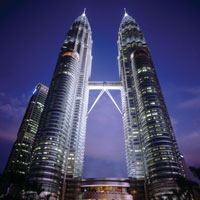
by StudyMalaysia.com on February 20, 2015 | Why Study in Malaysia

Knowing Malaysia - A Role Model For New Industrialised Nations Introduction to Malaysia
Malaysia has grown tremendously and has become a more developed country over the years since her independence 48 years ago. It has soared like an eagle, evolving into a high technology nation with her own Silicon Valley and, her many high technology buildings, some of which were built to depict the rich heritage of Malaysia, like the Petronas Twin Towers. Malaysia has experienced a steady economic progression and rapid infrastructural development of which Malaysians are truly proud.
Malaysia is a country with a harmonious and peaceful living environment where various ethnic races intermingle amicably with one another through mutual understanding and tolerance fostered through the many decades of togetherness.
Besides these, Malaysia is a Shopping Paradise and is also popularly known as Asia's Food Paradise. The various races, religions and cultures found in Malaysia result in a harmonious blend of mouth-watering food. A much sought-after tourist attraction, Malaysia has been rightfully tagged 'Malaysia, truly Asia' as it offers a wide variety of Asian culture and food.
Education opportunity is abundant for International Students. Come to Malaysia to explore as well as to learn from a country of great diversity, rapid economic development and with people living in a peace and harmony!
This segment of Knowing Malaysia will provide a general outline of the nature, economy, security, races and cultures of Malaysia among other relevant and interesting information before delving deeper into each of the main aspects and features in the following segments.
Malaysia has grown tremendously and has become a more developed country over the years since her independence 48 years ago. It has soared like an eagle, evolving into a high technology nation with her own Silicon Valley and, her many high technology buildings, some of which were built to depict the rich heritage of Malaysia, like the Petronas Twin Towers. Malaysia has experienced a steady economic progression and rapid infrastructural development of which Malaysians are truly proud.
Malaysia is a country with a harmonious and peaceful living environment where various ethnic races intermingle amicably with one another through mutual understanding and tolerance fostered through the many decades of togetherness.
Besides these, Malaysia is a Shopping Paradise and is also popularly known as Asia's Food Paradise. The various races, religions and cultures found in Malaysia result in a harmonious blend of mouth-watering food. A much sought-after tourist attraction, Malaysia has been rightfully tagged 'Malaysia, truly Asia' as it offers a wide variety of Asian culture and food.
Education opportunity is abundant for International Students. Come to Malaysia to explore as well as to learn from a country of great diversity, rapid economic development and with people living in a peace and harmony!
This segment of Knowing Malaysia will provide a general outline of the nature, economy, security, races and cultures of Malaysia among other relevant and interesting information before delving deeper into each of the main aspects and features in the following segments.
Malaysia's Location and States in Brief (Superb Location & Co-Exist Neighbourhood)
Being one of the most developed countries in the ASEAN region, Malaysia, which sits at the core of South-East Asia, directly below Thailand and above Singapore, is made up of the high-end technologically-developed West Malaysia and the more pristine East Malaysia, well-known for eco-tourism and nature tourism.
The two lands are however, separated by the South China Sea. While West Malaysia (Peninsular Malaysia) encompasses 13 states and three Federal Territories (namely, Kuala Lumpur - the capital; Putrajaya - the new Administrative centre; and Labuan -an island off the coast of Sabah), East Malaysia, on the other hand, consists of the states of Sabah and Sarawak on the island of Borneo.
Malaysia is one of the founding members of ASEAN and has a diversity of beliefs and cultures. Malaysia co-exists harmoniously with the neighbouring countries in the Asian region as well as with the world.

Being one of the most developed countries in the ASEAN region, Malaysia, which sits at the core of South-East Asia, directly below Thailand and above Singapore, is made up of the high-end technologically-developed West Malaysia and the more pristine East Malaysia, well-known for eco-tourism and nature tourism.
The two lands are however, separated by the South China Sea. While West Malaysia (Peninsular Malaysia) encompasses 13 states and three Federal Territories (namely, Kuala Lumpur - the capital; Putrajaya - the new Administrative centre; and Labuan -an island off the coast of Sabah), East Malaysia, on the other hand, consists of the states of Sabah and Sarawak on the island of Borneo.
Malaysia is one of the founding members of ASEAN and has a diversity of beliefs and cultures. Malaysia co-exists harmoniously with the neighbouring countries in the Asian region as well as with the world.

Malaysia's Races and Religions in Brief (Harmonious Multicultural Society)
Malaysia is a multi-ethnic country with a population of 24.3 million, comprising 16.06 million Bumiputras (66.2%), 6.1million Chinese (25.1 %), 1.8 million Indians (7.4%) and 312,000 (1.3%) people of other races. It is a melting pot of colourful cultures and ethnic diversities - a healthy mix of Malays, Chinese, Indians, and other aboriginal inhabitants: the "orang asli" in Peninsular Malaysia and the "pre-bumis" (in East Malaysia).
Bahasa Melayu is the country's national language, but citizens speak freely their own languages and dialects as well as languages from other parts of the world including the English language, which is widely-spoken by most of the people in Malaysia. Mandarin, the Chinese language, is widely spoken by the Malaysian Chinese besides their respective dialects like Cantonese, Hokkien, Hakka and others. The Malaysian Indian community's dialects include Punjabi and Tamil among others.
Apart from permitting the citizens the freedom to speak different languages and dialects, the government of Malaysia also allows the freedom of beliefs and worships. As such, Malaysians embrace diverse religions like Buddhism, Christianity, and Hinduism, although Islam is declared as the nation's official religion.
Malaysia is a multi-ethnic country with a population of 24.3 million, comprising 16.06 million Bumiputras (66.2%), 6.1million Chinese (25.1 %), 1.8 million Indians (7.4%) and 312,000 (1.3%) people of other races. It is a melting pot of colourful cultures and ethnic diversities - a healthy mix of Malays, Chinese, Indians, and other aboriginal inhabitants: the "orang asli" in Peninsular Malaysia and the "pre-bumis" (in East Malaysia).
Bahasa Melayu is the country's national language, but citizens speak freely their own languages and dialects as well as languages from other parts of the world including the English language, which is widely-spoken by most of the people in Malaysia. Mandarin, the Chinese language, is widely spoken by the Malaysian Chinese besides their respective dialects like Cantonese, Hokkien, Hakka and others. The Malaysian Indian community's dialects include Punjabi and Tamil among others.
Apart from permitting the citizens the freedom to speak different languages and dialects, the government of Malaysia also allows the freedom of beliefs and worships. As such, Malaysians embrace diverse religions like Buddhism, Christianity, and Hinduism, although Islam is declared as the nation's official religion.
Malaysian Government in Brief (Politically Stable Government)
Malaysia practises democratic ruling with a Prime Minister at the helm, who is, at present, YAB Dato' Sri Mohd.Najib bin Tun Haji Abdul Razak. The head of the state is His Majesty The Yang di-Pertuan Agong who is elected every five years from one of the nine hereditary rulers or sultans and the country is under a system of constitutional monarchy.
This politically-stable nation emphasizes the sharing of power amid its ethnicity of races and the Government ensures a peaceful and harmonious relationship among the races, thus enabling Malaysia to gain recognition and acknowledgement as a "role model" country which is stable and peaceful. 'Barisan Nasional' (or National Front) the political coalition that manages and governs the nation is made up of UMNO (representing the interest of Malay), MCA (representing the interest of Chinese), MIC (representing the interest of India) and other ethnic-based political parties.
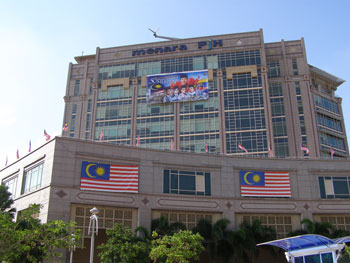
Malaysia practises democratic ruling with a Prime Minister at the helm, who is, at present, YAB Dato' Sri Mohd.Najib bin Tun Haji Abdul Razak. The head of the state is His Majesty The Yang di-Pertuan Agong who is elected every five years from one of the nine hereditary rulers or sultans and the country is under a system of constitutional monarchy.
This politically-stable nation emphasizes the sharing of power amid its ethnicity of races and the Government ensures a peaceful and harmonious relationship among the races, thus enabling Malaysia to gain recognition and acknowledgement as a "role model" country which is stable and peaceful. 'Barisan Nasional' (or National Front) the political coalition that manages and governs the nation is made up of UMNO (representing the interest of Malay), MCA (representing the interest of Chinese), MIC (representing the interest of India) and other ethnic-based political parties.

Malaysian Economy in Brief (Strong Economy)
Malaysia has a very highly-diversified economic structure. Malaysia is stable and prosperous economically, and has evolved remarkably over the past decades into a prosperous nation. With a strong banking sector, low interest rate, moderate inflation, and low unemployment rate of 3.5%, Malaysia provides an environment conducive for growth.
The Malaysian economy is expected to remain sound and favourable throughout 2005 and a growth of 5.1% gross domestic product (GDP) is expected. The first quarter of 2005 has already seen an increase of 5.7% - the growth being powered by strong performance in the agriculture, commodities and services sectors.
The shift towards industrialization has redirected the nation's dependence towards manufactured products such as electrical and electronics (E&E) goods. The year 2005 has seen a strong improvement in the exports of E&E products. Malaysia also takes pride in being one of the world's largest exporters of palm oil, natural rubber, natural gas production, timber, cocoa beans, and pepper. The chemical products industry recorded a higher growth of 13.4% due to the higher production of industrial gases in 2005. In terms of international achievements, the country has risen, within a relatively short span of time, to be among the top 20 trading nations in the world, and this status has been further underscored by the ranking made by US-based Foreign Policy Magazine that states Malaysia as among the world's most globalised countries.
The Bank Negara Malaysia's total international reserves amounted to USD74.8 billion in mid-May 2005 and are sufficient to finance 8.7 months of retained imports and 7.2 times the short-term external debt. Malaysia's official reserve assets amounted to USD73.289 billion with other foreign currency assets amounting to USD448.43 million.
As at December 2004, Malaysia's total trade stood at USD231,794 million (USD126,511 million for exports and USD105,283 million), with more than 22 trading partners worldwide. The per capita income is USD4,373.
Malaysia has also emerged as the first country to issue global Islamic bonds, known as the Sukuk Al-Ijarah. Another significant achievement of the country was the establishment of the Islamic Financial Services Board in Kuala Lumpur to ensure stability and to strengthen the global Islamic financial industry. With these achievements, Malaysia has now become a model in the expansion of the Islamic financial system among Islamic countries. Recognised as an advanced and progressive Islamic nation, Malaysia has succeeded in undertaking the jihad in many aspects of development, particularly in economic, social, religious and political development. Malaysia has proven the capability of the Islamic community in this age.
On 21st July 2005, the Ringgit-peg against USD at USD1=RM3.80 has been removed and moved to a managed float against a basket of currencies.
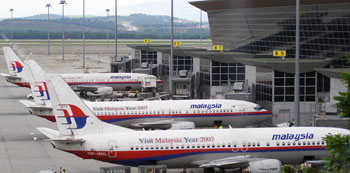
Malaysia has a very highly-diversified economic structure. Malaysia is stable and prosperous economically, and has evolved remarkably over the past decades into a prosperous nation. With a strong banking sector, low interest rate, moderate inflation, and low unemployment rate of 3.5%, Malaysia provides an environment conducive for growth.
The Malaysian economy is expected to remain sound and favourable throughout 2005 and a growth of 5.1% gross domestic product (GDP) is expected. The first quarter of 2005 has already seen an increase of 5.7% - the growth being powered by strong performance in the agriculture, commodities and services sectors.
The shift towards industrialization has redirected the nation's dependence towards manufactured products such as electrical and electronics (E&E) goods. The year 2005 has seen a strong improvement in the exports of E&E products. Malaysia also takes pride in being one of the world's largest exporters of palm oil, natural rubber, natural gas production, timber, cocoa beans, and pepper. The chemical products industry recorded a higher growth of 13.4% due to the higher production of industrial gases in 2005. In terms of international achievements, the country has risen, within a relatively short span of time, to be among the top 20 trading nations in the world, and this status has been further underscored by the ranking made by US-based Foreign Policy Magazine that states Malaysia as among the world's most globalised countries.
The Bank Negara Malaysia's total international reserves amounted to USD74.8 billion in mid-May 2005 and are sufficient to finance 8.7 months of retained imports and 7.2 times the short-term external debt. Malaysia's official reserve assets amounted to USD73.289 billion with other foreign currency assets amounting to USD448.43 million.
As at December 2004, Malaysia's total trade stood at USD231,794 million (USD126,511 million for exports and USD105,283 million), with more than 22 trading partners worldwide. The per capita income is USD4,373.
Malaysia has also emerged as the first country to issue global Islamic bonds, known as the Sukuk Al-Ijarah. Another significant achievement of the country was the establishment of the Islamic Financial Services Board in Kuala Lumpur to ensure stability and to strengthen the global Islamic financial industry. With these achievements, Malaysia has now become a model in the expansion of the Islamic financial system among Islamic countries. Recognised as an advanced and progressive Islamic nation, Malaysia has succeeded in undertaking the jihad in many aspects of development, particularly in economic, social, religious and political development. Malaysia has proven the capability of the Islamic community in this age.
On 21st July 2005, the Ringgit-peg against USD at USD1=RM3.80 has been removed and moved to a managed float against a basket of currencies.

Malaysia's Infrastructure in Brief (Excellent Infrastructure)
Malaysia has seen a fast development of excellent infrastructures which make commuting a more pleasurable and convenient activity with well-connected transportation and communication systems within the country and the rest of the world. This makes Malaysia a country with one of the most developed state-of-the-art infrastructures in Southeast Asia, which is comparable to that in developed nations. Internally, Malaysia is connected by easily-accessible transportations like the KTM (Keretapi Tanah Melayu) trains, the Light Rail Transit (LRT), the Monorail within Kuala Lumpur city and buses as well as taxis.
Among the international milestones which Malaysia has achieved in the area of infrastructure development is the spectacular Fourth Best Airport Worldwide - the Kuala Lumpur International Airport (KLIA), which services most major international airlines. KLIA provides world class facilities and services and was named one of the world's best airports for customer satisfaction in 2005.
Other international milestones for Malaysia include the Formula One (F1) circuit in Sepang that hosts the F1 Grand Prix Championship every year; the tallest twin-tower in the world - the Petronas Twin Towers; the Kuala Lumpur Telecommunications Tower; Kuala Lumpur Conventional Centre; the 848-km North-South Expressway which impressively connects the North of Peninsular Malaysia in Bukit Kayu Hitam (border to Thailand) to the South in Johor Bahru (border to Singapore). This has brought essential development indirectly to the rural areas besides shortening the travel time for millions of commuters.
In addition, Malaysia is also well-linked by sea, with remarkably-built sea ports in the states of Selangor, Penang, Johor, and Labuan, as well as the cities of Langkawi and Kuantan. The country's largest seaport is the leading shipping and cargo terminal, Kelang Container Terminal, in Port Klang (Selangor), which is located midway on the west coast of Peninsular Malaysia.
Malaysia has seen a fast development of excellent infrastructures which make commuting a more pleasurable and convenient activity with well-connected transportation and communication systems within the country and the rest of the world. This makes Malaysia a country with one of the most developed state-of-the-art infrastructures in Southeast Asia, which is comparable to that in developed nations. Internally, Malaysia is connected by easily-accessible transportations like the KTM (Keretapi Tanah Melayu) trains, the Light Rail Transit (LRT), the Monorail within Kuala Lumpur city and buses as well as taxis.
Among the international milestones which Malaysia has achieved in the area of infrastructure development is the spectacular Fourth Best Airport Worldwide - the Kuala Lumpur International Airport (KLIA), which services most major international airlines. KLIA provides world class facilities and services and was named one of the world's best airports for customer satisfaction in 2005.
Other international milestones for Malaysia include the Formula One (F1) circuit in Sepang that hosts the F1 Grand Prix Championship every year; the tallest twin-tower in the world - the Petronas Twin Towers; the Kuala Lumpur Telecommunications Tower; Kuala Lumpur Conventional Centre; the 848-km North-South Expressway which impressively connects the North of Peninsular Malaysia in Bukit Kayu Hitam (border to Thailand) to the South in Johor Bahru (border to Singapore). This has brought essential development indirectly to the rural areas besides shortening the travel time for millions of commuters.
In addition, Malaysia is also well-linked by sea, with remarkably-built sea ports in the states of Selangor, Penang, Johor, and Labuan, as well as the cities of Langkawi and Kuantan. The country's largest seaport is the leading shipping and cargo terminal, Kelang Container Terminal, in Port Klang (Selangor), which is located midway on the west coast of Peninsular Malaysia.
Malaysia's Technology, Telecommunication & Internet Infrastructure in Brief (Huge Investment)
Malaysia has invested heavily in the telecommunication infrastructures which include high-end technology infrastructures such as the Multimedia Super Corridor within which visitors can see the world's first 'smart cities' Putrajaya - the administrative centre and Cyberjaya. High-end ICT is also used for the internal transportations like the KL Express Rail Link and The Light Rail Transit (LRT).
Malaysia's Telecommunication and Internet infrastructure has also developed tremendously and has surpassed many countries around the region. We have the existing satellites facilities like MEASAT 1 & 2 and the up-coming MEASAT 3, which serve most of the Malaysia's key ICT companies like Telekom Malaysia, Radio Televisyen Malaysia, TV3, NTV7, Maxis, DIGi, Celcom and Astro besides high-profile international companies like BBC Worldwide, VTV and Globe Telecom.
Besides the Wireless Access Point (WAP) for internet access, Wireless Broadband and Wi-fifacilities, Malaysian Telecommunication has also developed to be on par with the developed countries with the introduction of 3G (3rd Generation) services in mobile phones. Mobile Service Providers Celcom and Maxis - two of the top mobile service providers in the country - are now offering the 3G technology for mobile phone users. 3G which means 3rd Generation has many attractive features like receiving TV channels, internet movies, video-clip advertisements, voice over as well as sending and receiving video conferencing, plus MMS, SMS and other normal mobile phone facilities.
Malaysia has invested heavily in the telecommunication infrastructures which include high-end technology infrastructures such as the Multimedia Super Corridor within which visitors can see the world's first 'smart cities' Putrajaya - the administrative centre and Cyberjaya. High-end ICT is also used for the internal transportations like the KL Express Rail Link and The Light Rail Transit (LRT).
Malaysia's Telecommunication and Internet infrastructure has also developed tremendously and has surpassed many countries around the region. We have the existing satellites facilities like MEASAT 1 & 2 and the up-coming MEASAT 3, which serve most of the Malaysia's key ICT companies like Telekom Malaysia, Radio Televisyen Malaysia, TV3, NTV7, Maxis, DIGi, Celcom and Astro besides high-profile international companies like BBC Worldwide, VTV and Globe Telecom.
Besides the Wireless Access Point (WAP) for internet access, Wireless Broadband and Wi-fifacilities, Malaysian Telecommunication has also developed to be on par with the developed countries with the introduction of 3G (3rd Generation) services in mobile phones. Mobile Service Providers Celcom and Maxis - two of the top mobile service providers in the country - are now offering the 3G technology for mobile phone users. 3G which means 3rd Generation has many attractive features like receiving TV channels, internet movies, video-clip advertisements, voice over as well as sending and receiving video conferencing, plus MMS, SMS and other normal mobile phone facilities.
Malaysian Sports in Brief (Set to Achieve Excellence)
Attractive incentives are given to high achievers in sports especially those who are able to win medals in the international competition. Sport facilities are readily available almost everywhere in Malaysia. You can find sports facilities in sport complexes, campuses of higher educational institutions and in some places there are facilities for leisure activities in the parks. Our sports such as Badminton, Bowling and Squash, just to name a few, have accomplished world standard.
In the past years, many Malaysians have made their mark in world sports events. For example Esther Cheah was the world champion in the Women's World Bowling Championship at Aalborg in Dennark and Nicol David won the gold medal in the women's squash competition at the World Games in Duisburg, recently. In water sports, Azri Yahaya was the world champion under Class One (eight to nine year-olds) in last year's Formula Future World Championships. Tan Boon Heong and Hoon Thien How won the world junior doubles badminton title in Vancouver, Canada while Bryan Nickson Lomas won the world junior diving title in the 14 - 15 age group 3m springboard event in Belesu, Brazil. Lim Siew Ai, an international golfer, competes in major circuit like the US LPGA tour.
Two Malaysians have successfully swum non-stop across the English Channel. They are Datuk Abdul Malik Mydin in 2003 and Lennard Lee in 2004. Datin Paduka Sharifah Mazlina is the first Asian women to ski-sail across the Antartic. Badminton players Lee Chong Wei and Mohd Hafiz Hashim are ranked number 6 and 8 respectively in the world badminton rankings for June 2005.
Attractive incentives are given to high achievers in sports especially those who are able to win medals in the international competition. Sport facilities are readily available almost everywhere in Malaysia. You can find sports facilities in sport complexes, campuses of higher educational institutions and in some places there are facilities for leisure activities in the parks. Our sports such as Badminton, Bowling and Squash, just to name a few, have accomplished world standard.
In the past years, many Malaysians have made their mark in world sports events. For example Esther Cheah was the world champion in the Women's World Bowling Championship at Aalborg in Dennark and Nicol David won the gold medal in the women's squash competition at the World Games in Duisburg, recently. In water sports, Azri Yahaya was the world champion under Class One (eight to nine year-olds) in last year's Formula Future World Championships. Tan Boon Heong and Hoon Thien How won the world junior doubles badminton title in Vancouver, Canada while Bryan Nickson Lomas won the world junior diving title in the 14 - 15 age group 3m springboard event in Belesu, Brazil. Lim Siew Ai, an international golfer, competes in major circuit like the US LPGA tour.
Two Malaysians have successfully swum non-stop across the English Channel. They are Datuk Abdul Malik Mydin in 2003 and Lennard Lee in 2004. Datin Paduka Sharifah Mazlina is the first Asian women to ski-sail across the Antartic. Badminton players Lee Chong Wei and Mohd Hafiz Hashim are ranked number 6 and 8 respectively in the world badminton rankings for June 2005.
Malaysia's Various Attractions and Happenings in Brief (Haven for Tourists)
All the 13 states in Malaysia are unique with multifarious customs and cultures that offer diverse attractions and cultural heritages, which will fascinate foreigners visiting Malaysia. The captivating beauty which the country possesses will please visitors going about their tours of the many interesting places and 'must-do' activities, such as shopping in the numerous shopping complexes; taking eco-touring into the lush and pristine rainforests and other scenic spots; strolling along the theme parks and farms; getting involved in sports and games; besides many other exciting activities.
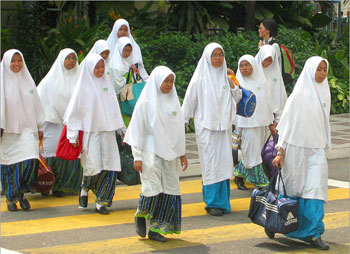
All the 13 states in Malaysia are unique with multifarious customs and cultures that offer diverse attractions and cultural heritages, which will fascinate foreigners visiting Malaysia. The captivating beauty which the country possesses will please visitors going about their tours of the many interesting places and 'must-do' activities, such as shopping in the numerous shopping complexes; taking eco-touring into the lush and pristine rainforests and other scenic spots; strolling along the theme parks and farms; getting involved in sports and games; besides many other exciting activities.

Excellence in the Education Sector (Aspiring to be the World's Best)
Education and development of human capital are always the top priority of the Government. The Malaysian education sector has grown tremendously during the past decade, giving Malaysia the acknowledgment as a centre of educational excellence in the region. This is a very befitting acknowledgement, as Malaysia has established 17 public educational institutions (which include an International Islamic University), 21 private universities, 5 foreign university branch campuses, more than 500 private colleges, as well as 32 international schools and 14 expatriate schools for local as well as international academic needs.
At present, there are more than 40,000 (figure as in 2005) foreign students of which 95% from a total of 40 countries (and another 5% from the other 100 countries) are pursuing their pre-tertiary and tertiary studies at the Malaysian educational institutions. Underlying our reputation as a provider of quality education is the fact that renowned foreign universities from UK and Australia have set up their branch campuses here, while various other higher institutions from US, Canada, French, Germany and New Zealand are offering twinning as well as franchised degree programmes in partnership with Malaysian colleges and universities.
Education and development of human capital are always the top priority of the Government. The Malaysian education sector has grown tremendously during the past decade, giving Malaysia the acknowledgment as a centre of educational excellence in the region. This is a very befitting acknowledgement, as Malaysia has established 17 public educational institutions (which include an International Islamic University), 21 private universities, 5 foreign university branch campuses, more than 500 private colleges, as well as 32 international schools and 14 expatriate schools for local as well as international academic needs.
At present, there are more than 40,000 (figure as in 2005) foreign students of which 95% from a total of 40 countries (and another 5% from the other 100 countries) are pursuing their pre-tertiary and tertiary studies at the Malaysian educational institutions. Underlying our reputation as a provider of quality education is the fact that renowned foreign universities from UK and Australia have set up their branch campuses here, while various other higher institutions from US, Canada, French, Germany and New Zealand are offering twinning as well as franchised degree programmes in partnership with Malaysian colleges and universities.
Malaysia - At Present and in Future
Malaysia is seen, in the present times, as a fast developing country which has undergone tremendous progress. On the international circuit, Malaysia has been acknowledged globally for the many numerous achievements attained by the country as a whole and by the citizens at the individual level.
Under the leadership of the Malaysian Prime Minister, YAB Dato' Sri Mohd.Najib bin Tun Haji Abdul Razak, Malaysia will continue to play an increasingly prominent role as a global participant in today's world that knows no boundaries, and further carve a name for itself, internationally in the political, economic, social, and cultural arena.
Note - All the currency conversion is based on USD1 = RM3.80 (Malaysia's Ringgit pegged against USD at USD1=RM3.80 has been removed on 21-7-2005).
Malaysia is seen, in the present times, as a fast developing country which has undergone tremendous progress. On the international circuit, Malaysia has been acknowledged globally for the many numerous achievements attained by the country as a whole and by the citizens at the individual level.
Under the leadership of the Malaysian Prime Minister, YAB Dato' Sri Mohd.Najib bin Tun Haji Abdul Razak, Malaysia will continue to play an increasingly prominent role as a global participant in today's world that knows no boundaries, and further carve a name for itself, internationally in the political, economic, social, and cultural arena.
Note - All the currency conversion is based on USD1 = RM3.80 (Malaysia's Ringgit pegged against USD at USD1=RM3.80 has been removed on 21-7-2005).
Map of Malaysia


Those rules moreover attempted to wind up plainly a decent approach to perceive
ReplyDeletethat other individuals online have the indistinguishable enthusiasm like mine to get a handle on
incredible arrangement more around this condition.
Avbio Internationl Conference at Singapore 2018
I admire this article for the well-researched content and excellent wording.I got so involved in this material that I couldn’t stop reading.I am impressed with your work and skill.Thank you so much. du học Nhật Bản
ReplyDeleteI think this is a very comprehensive article! However, I do think that the post needs to be rearranged better as the information is all over the place right now. Additionally, when it comes to finding information with regard to the school itself, my personal opinion is that it's best to go to the source for a clearer view!
ReplyDeleteOne such article that helped me when narrowing down my course searches was this: https://www.nilai.edu.my/news/common-mistakes-made-by-postgraduate-candidates
I hope you find it helpful!